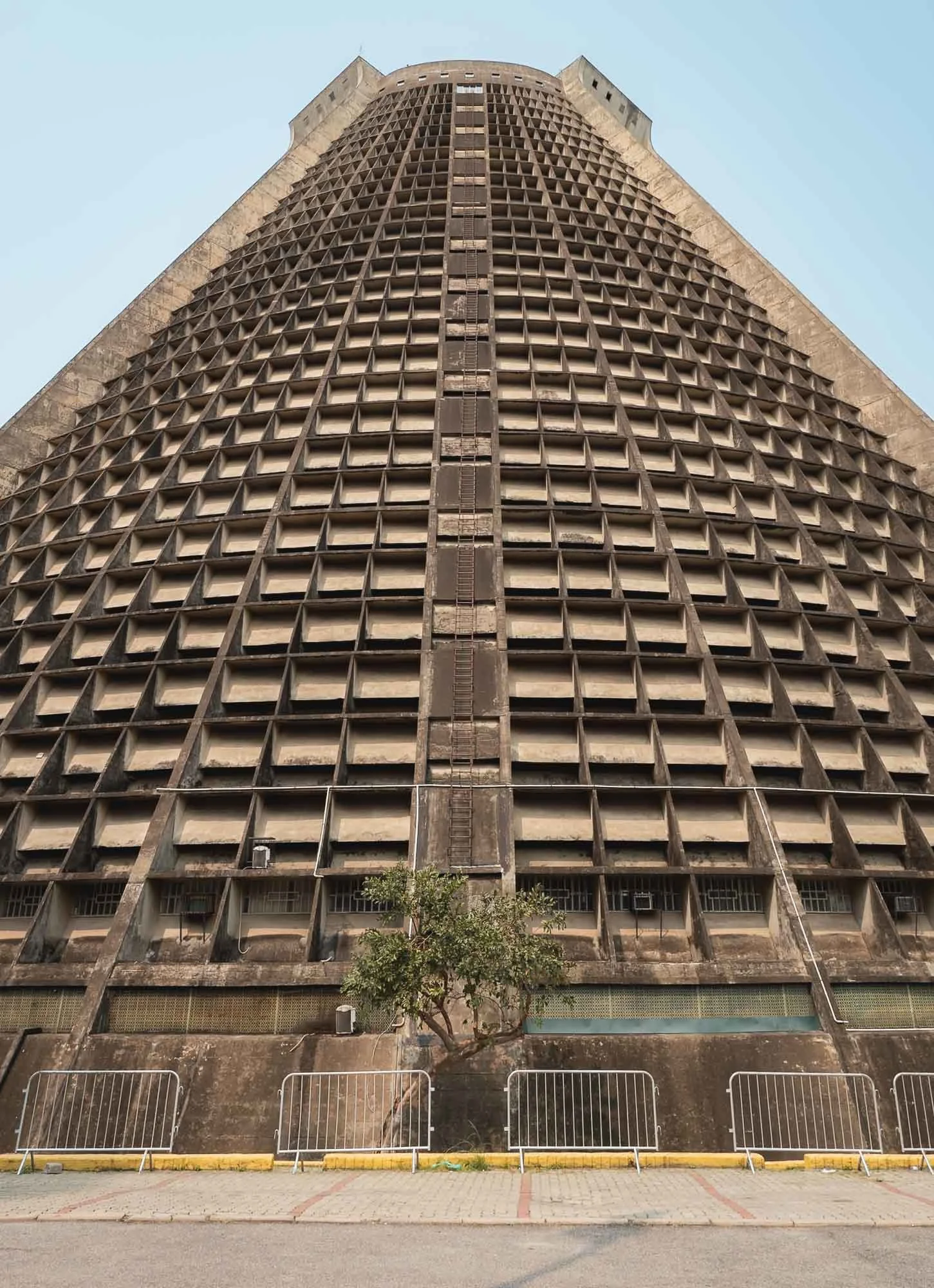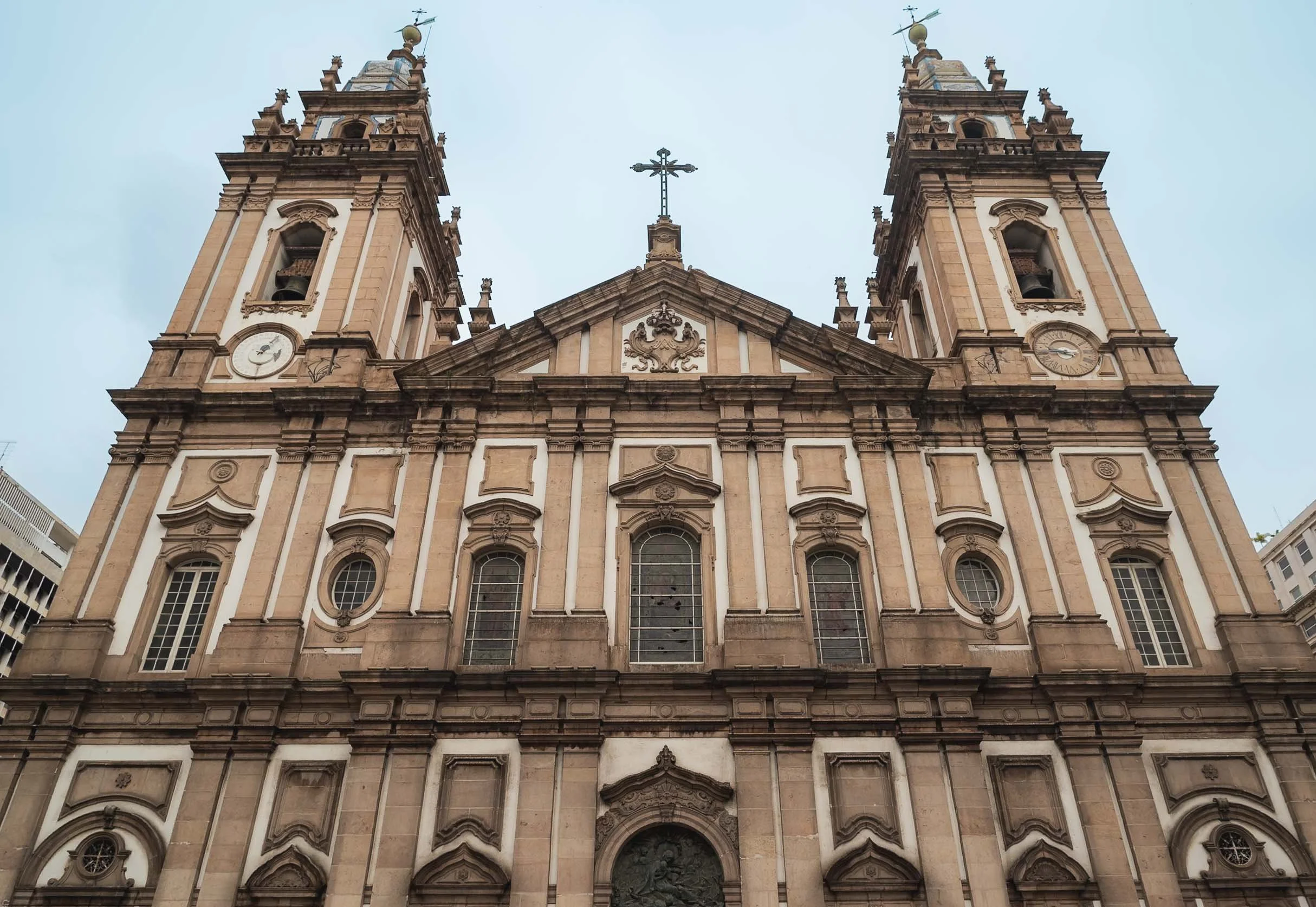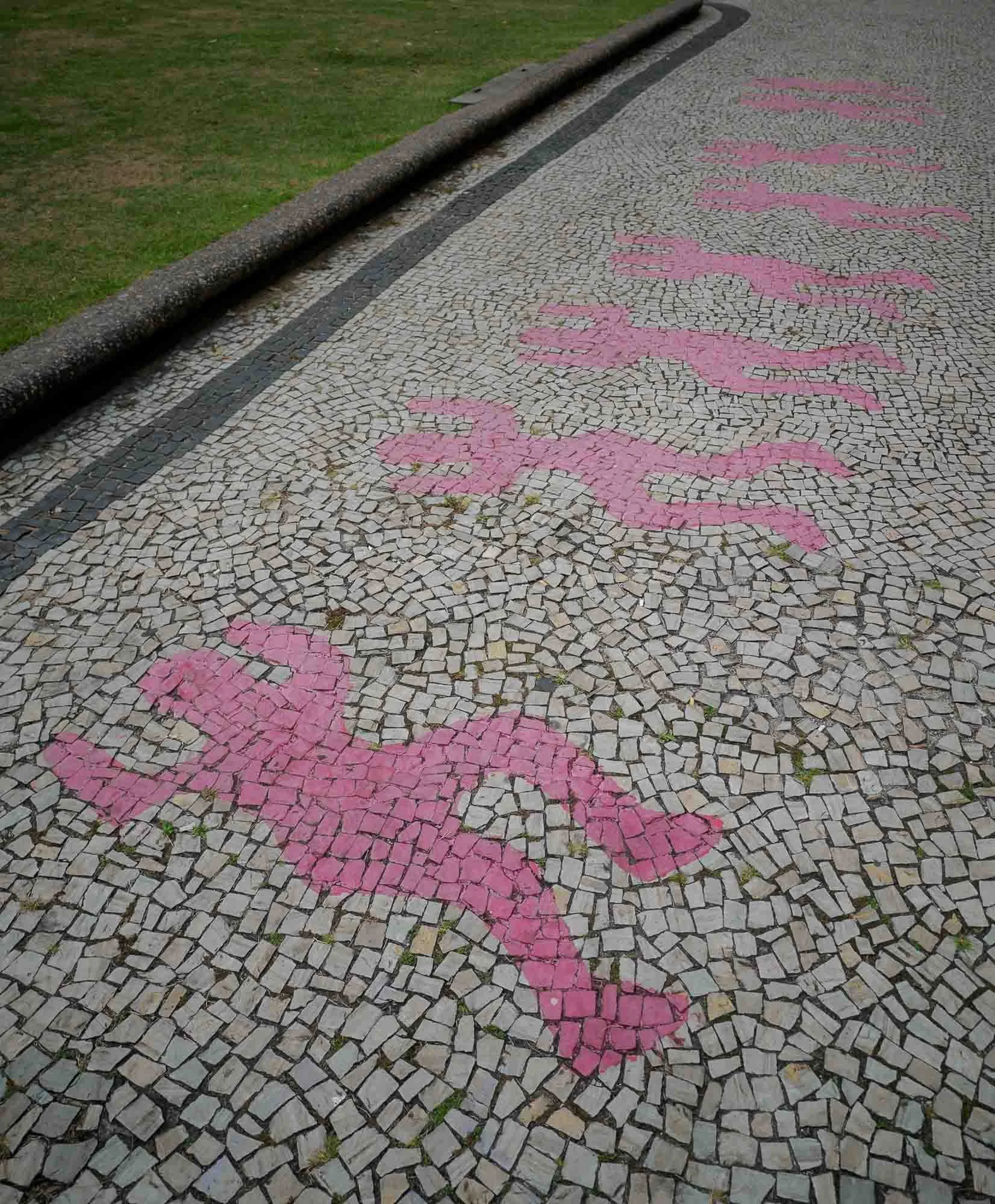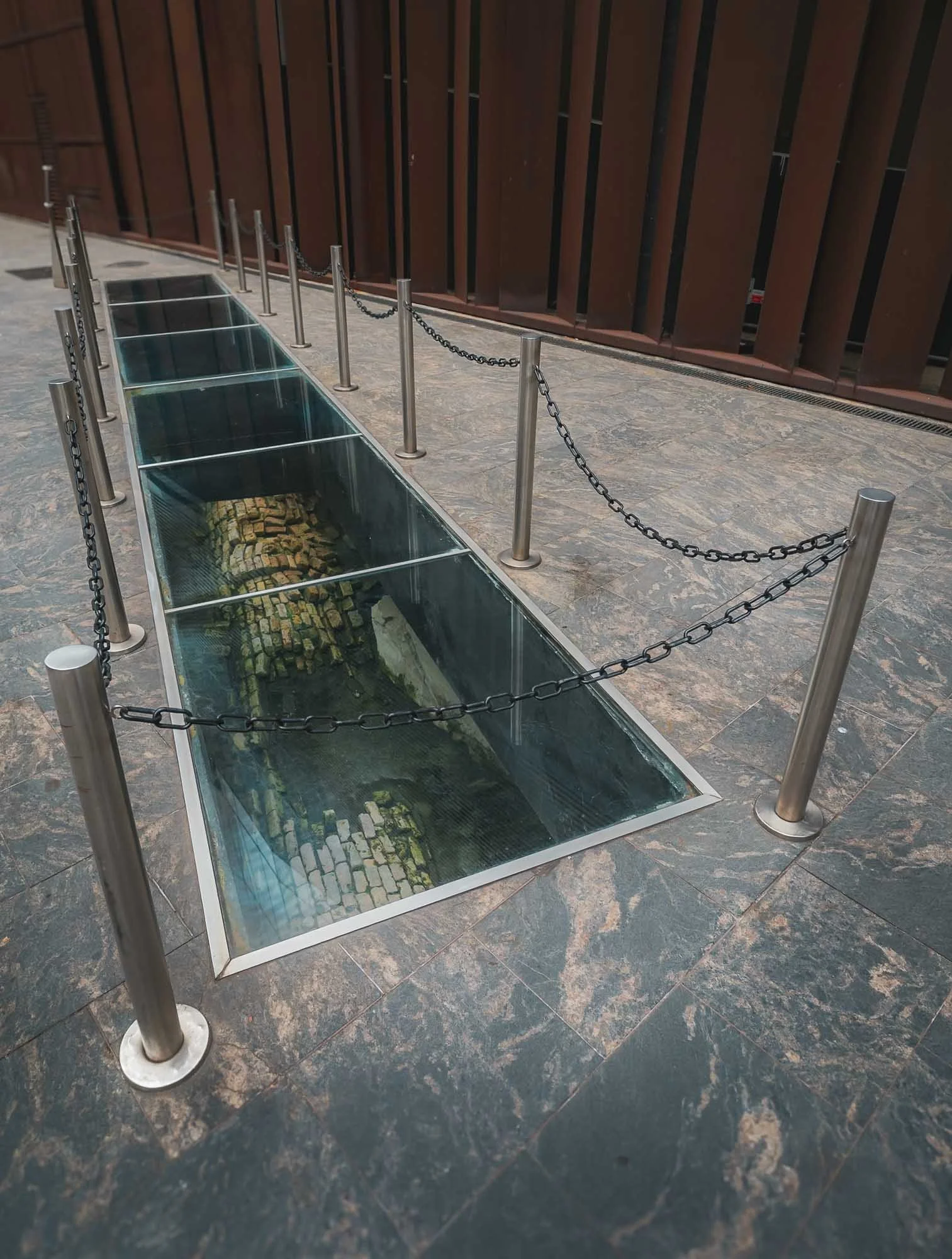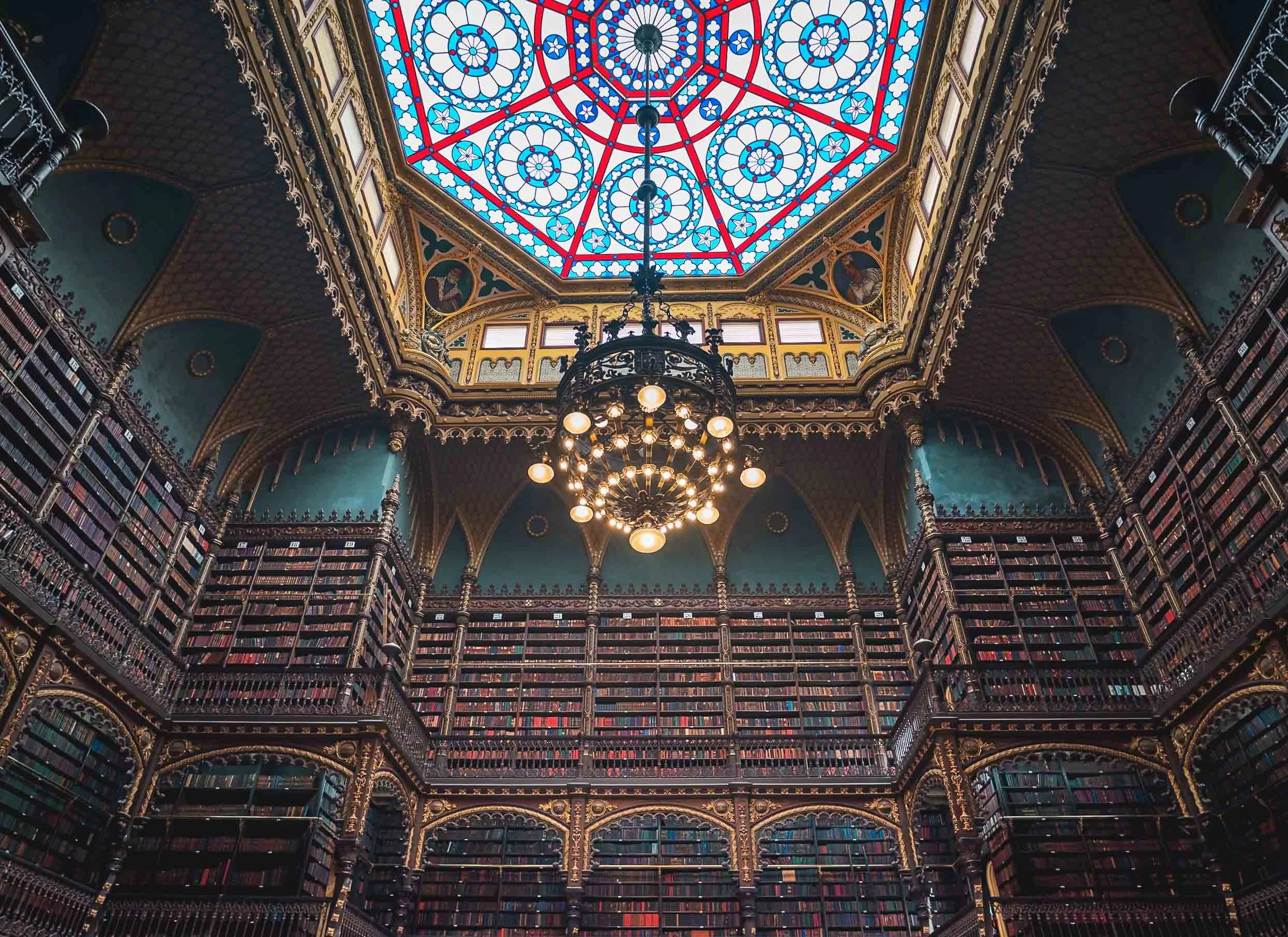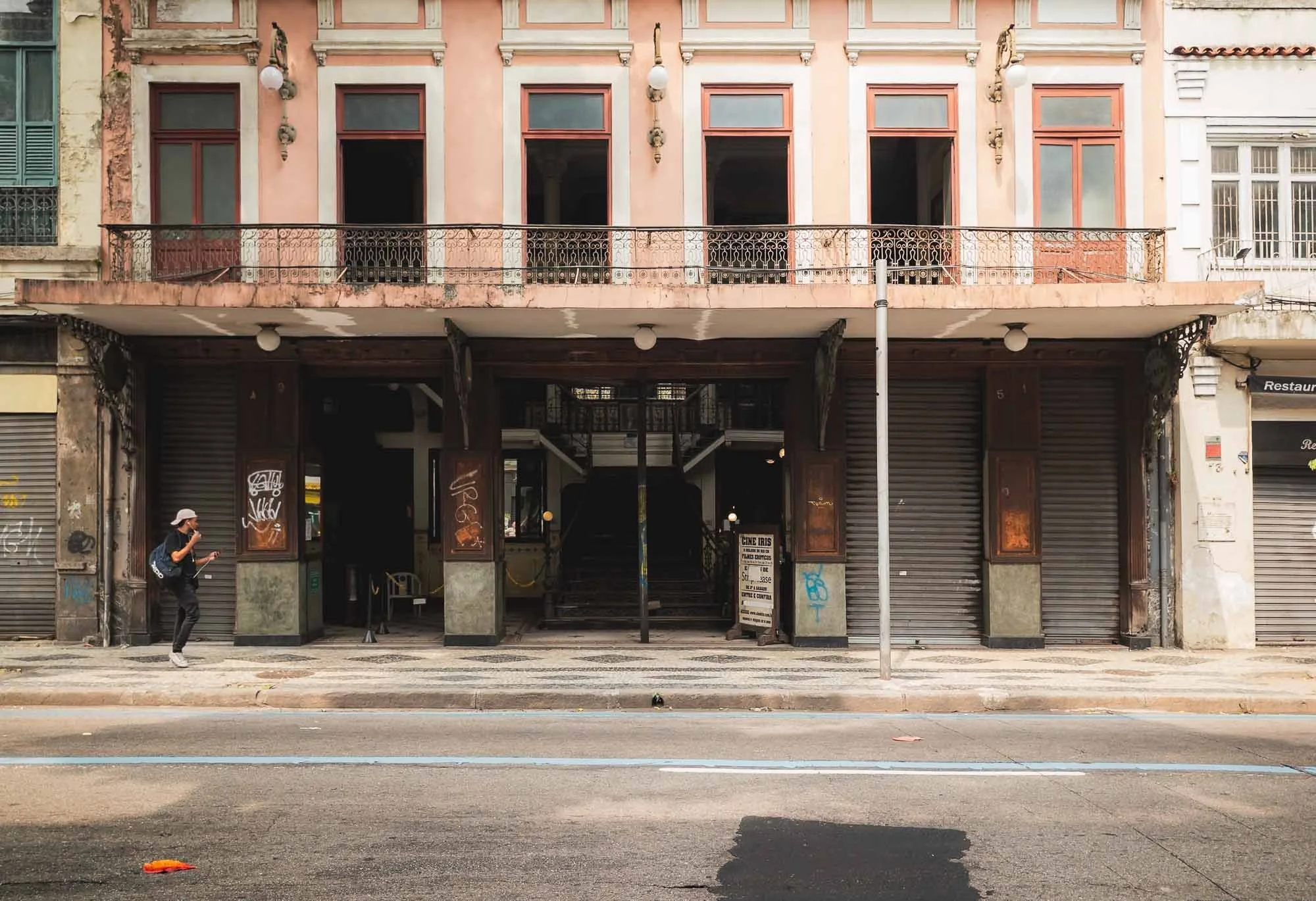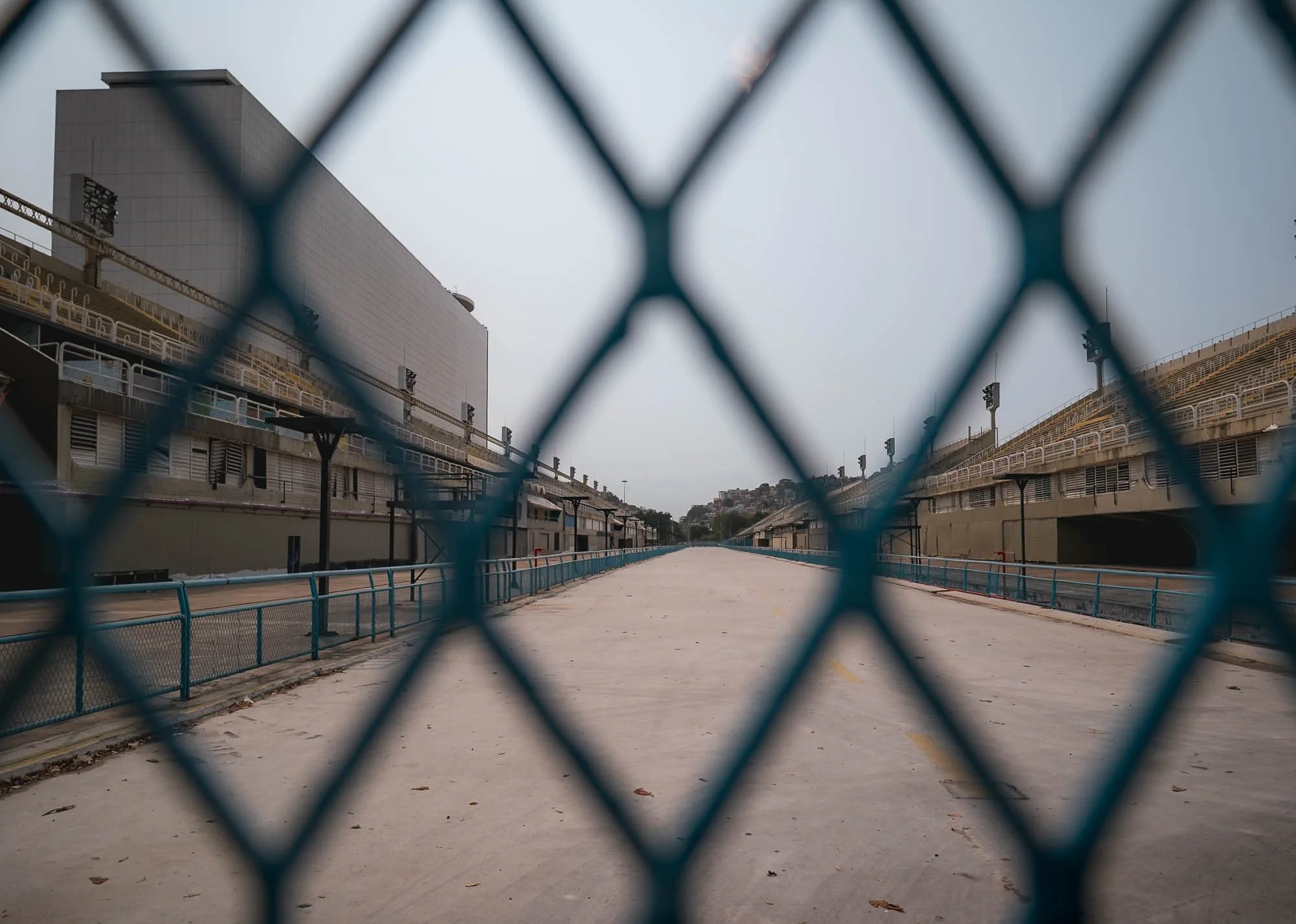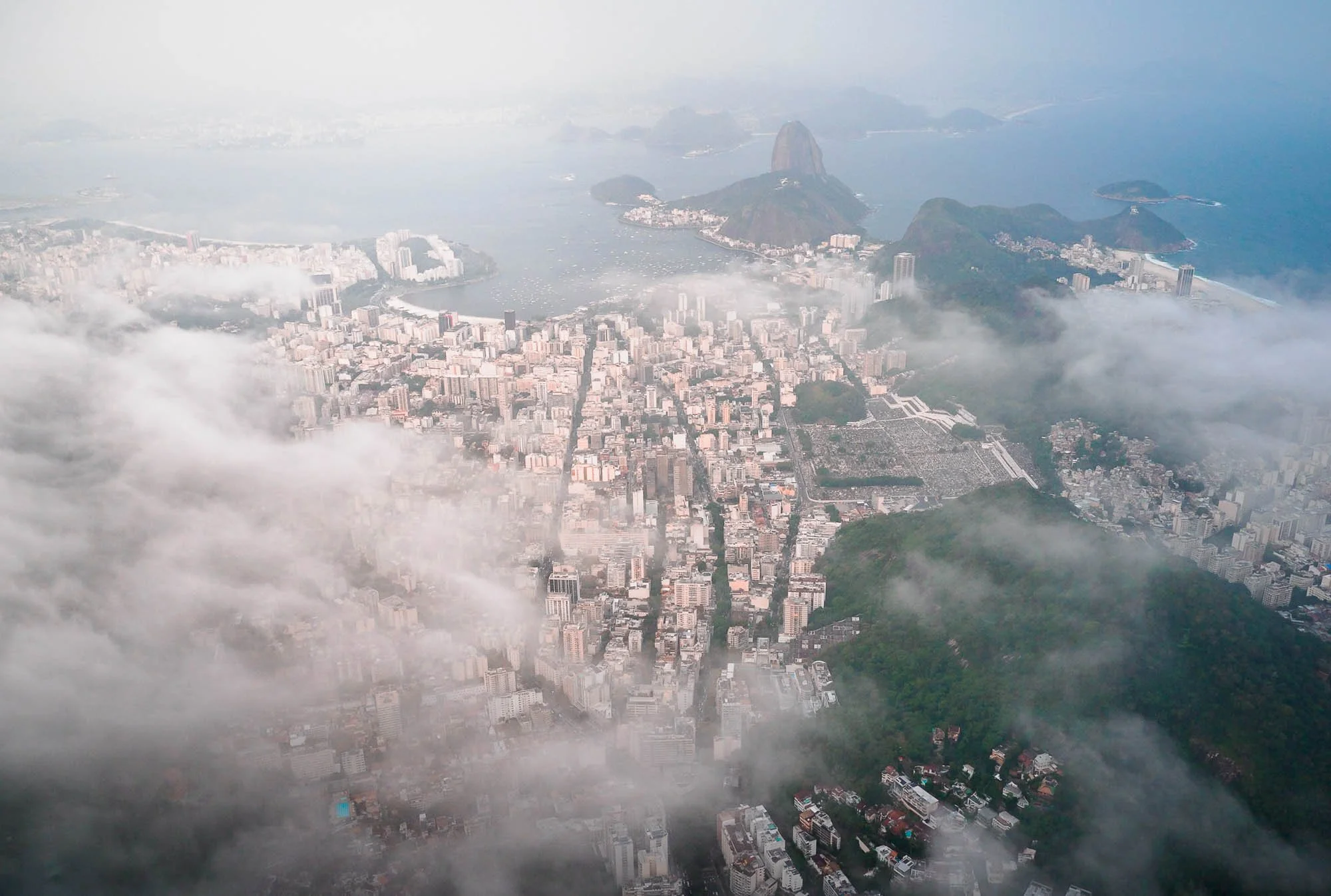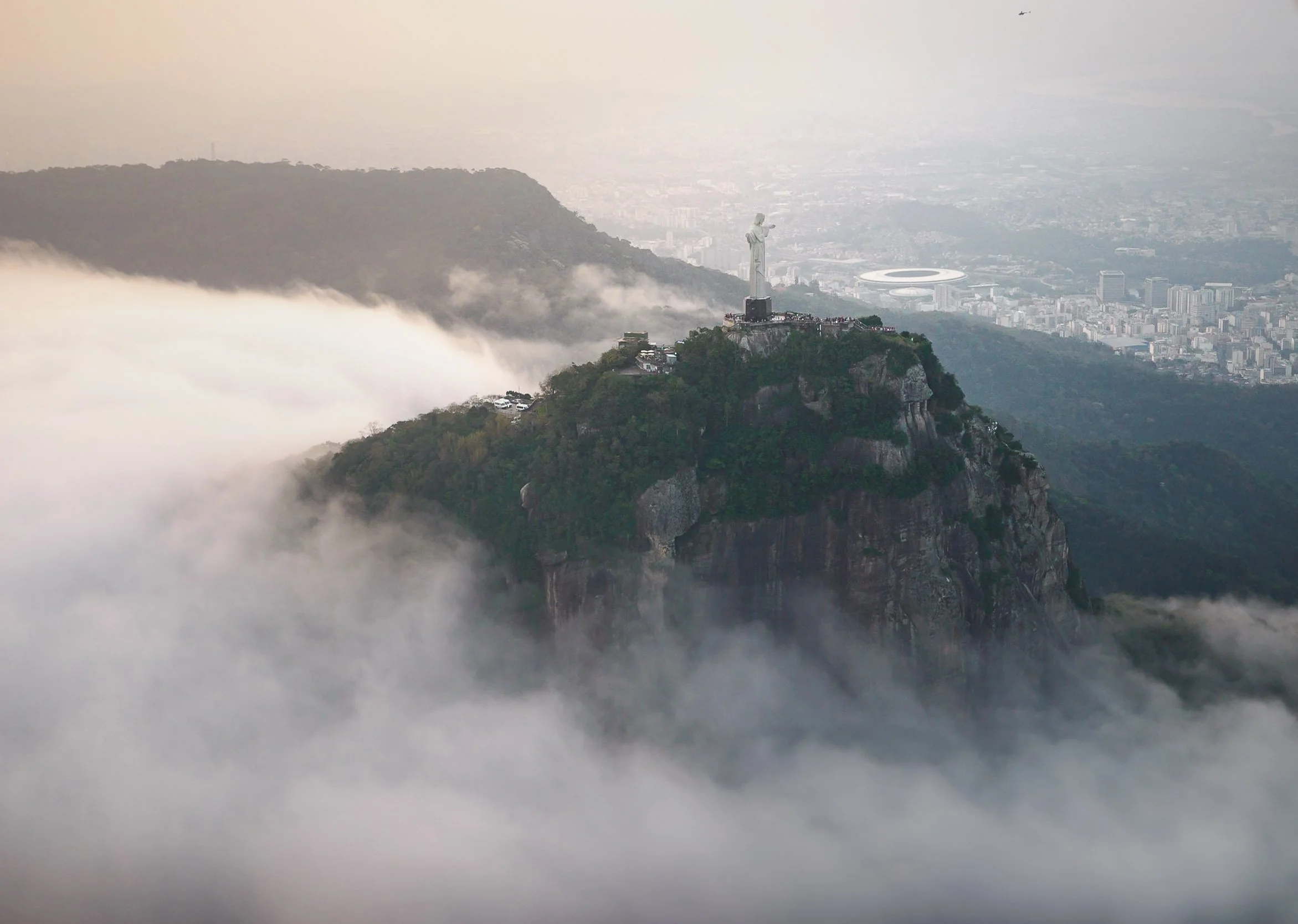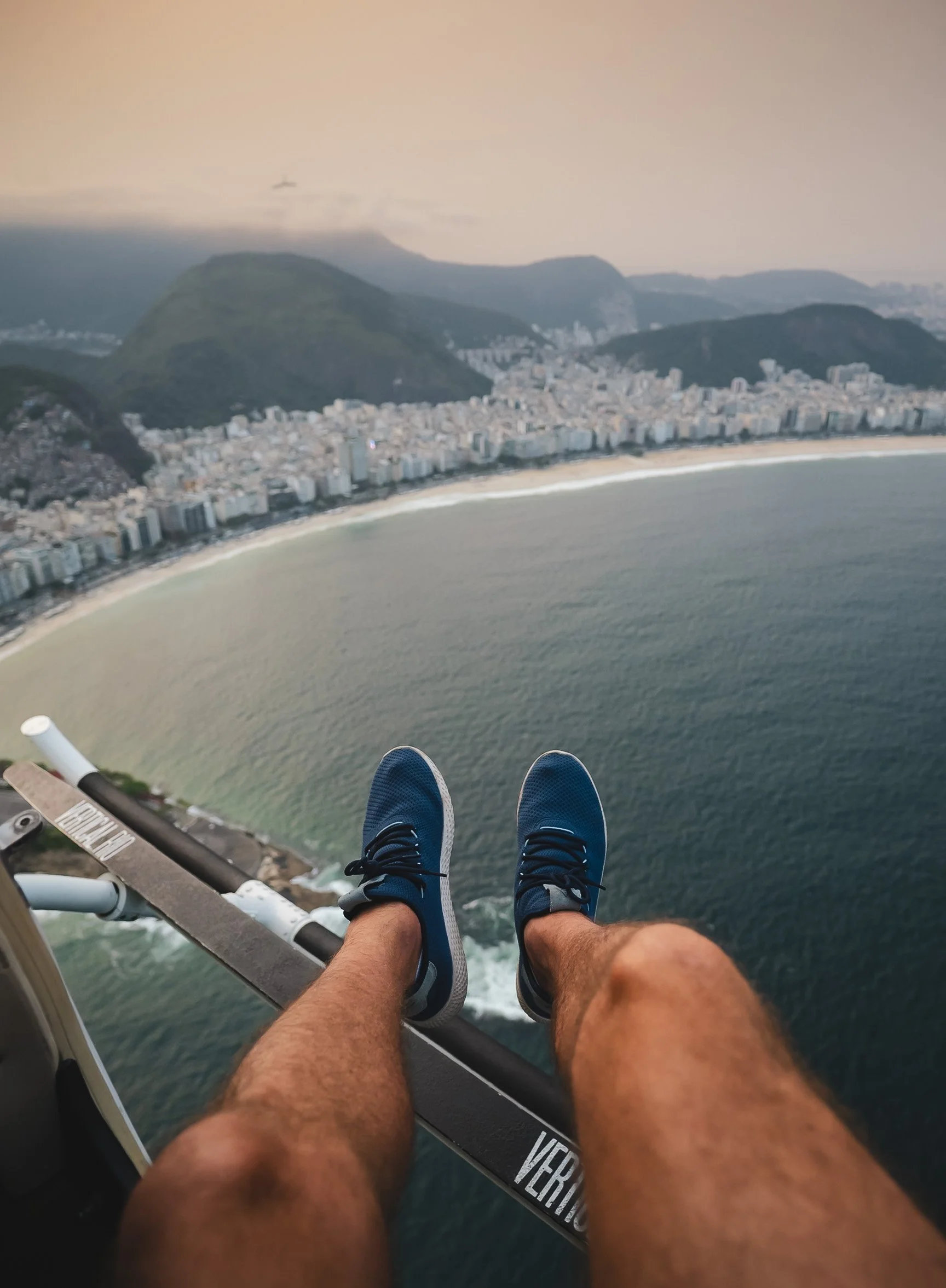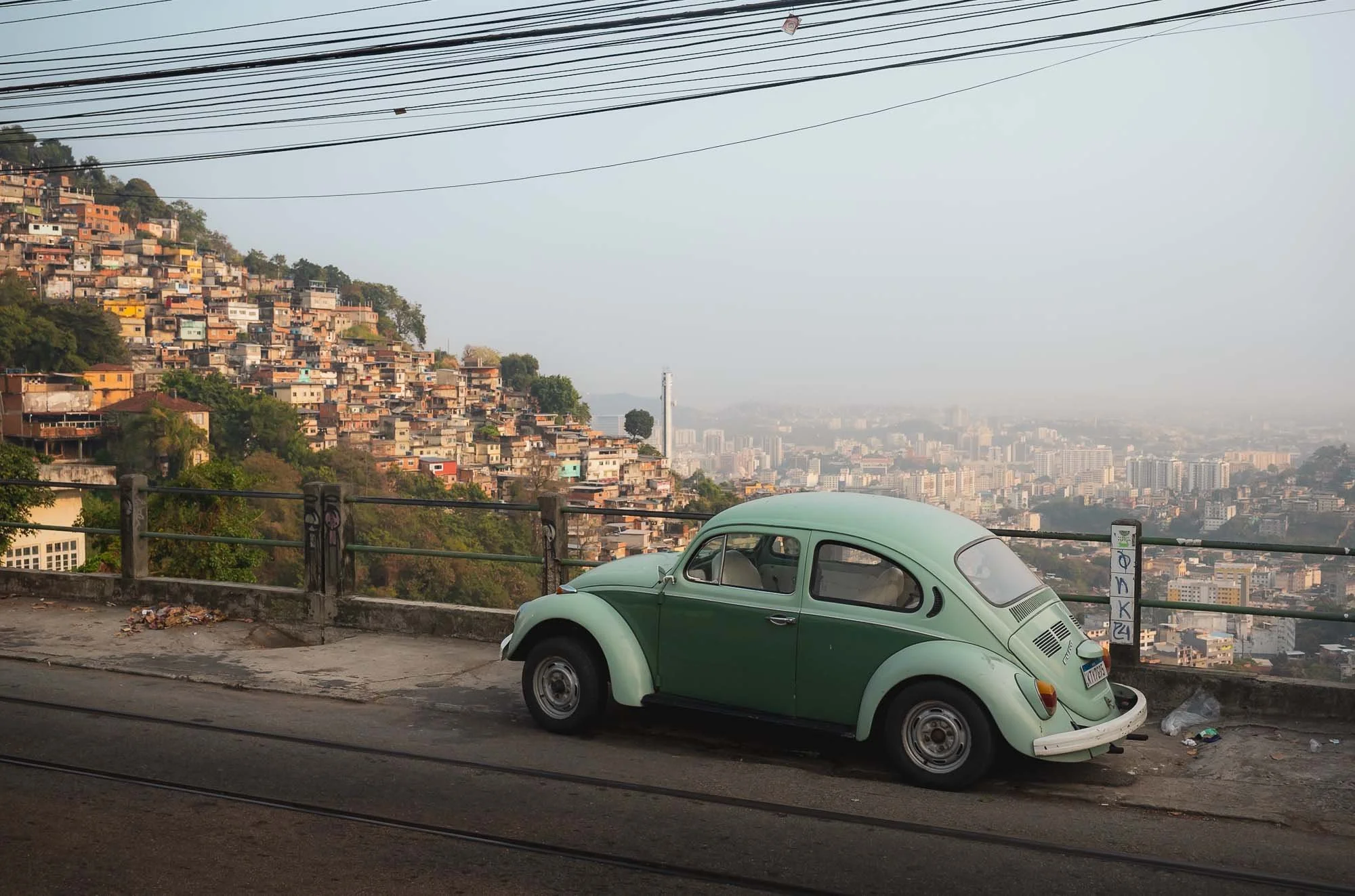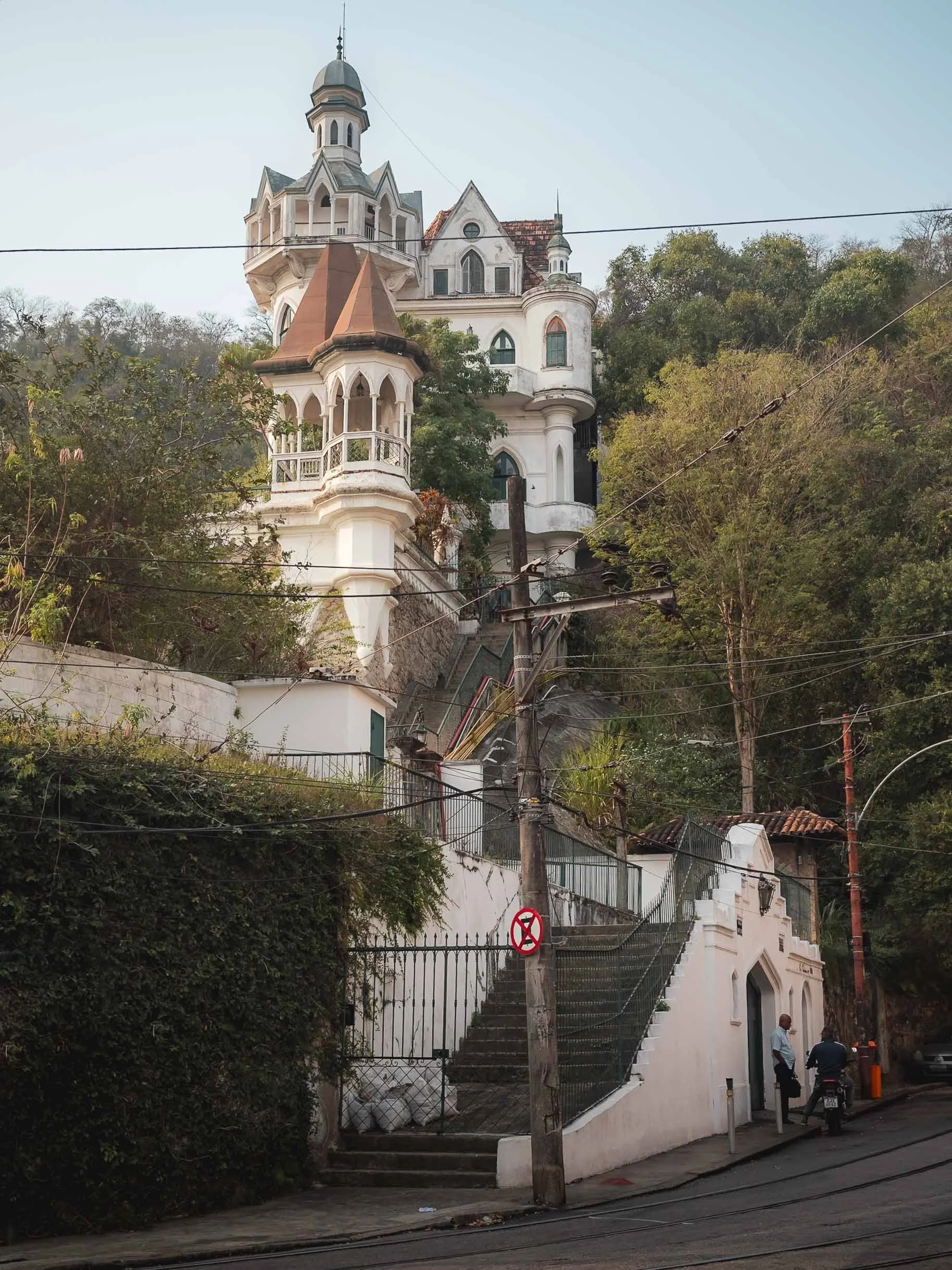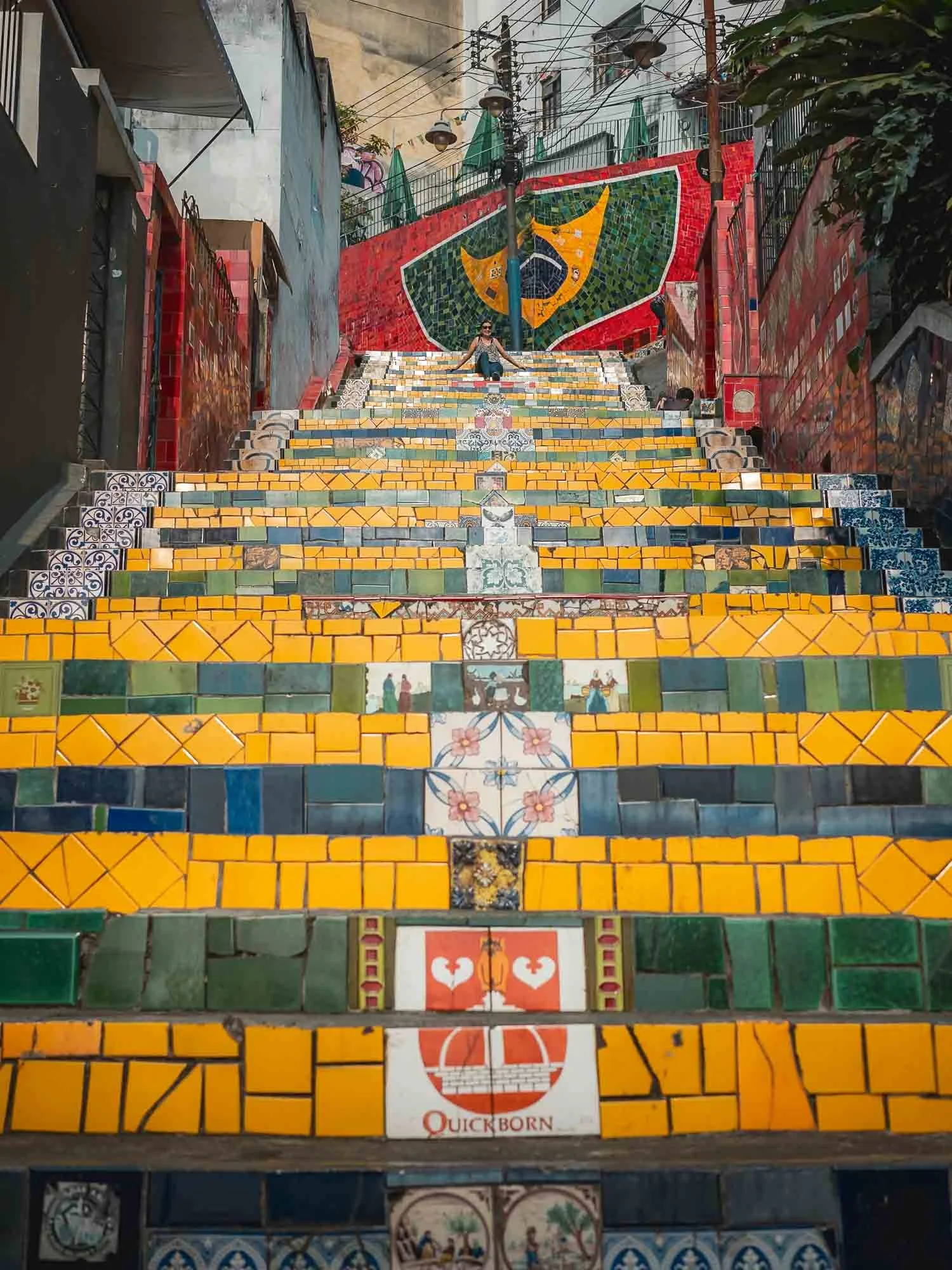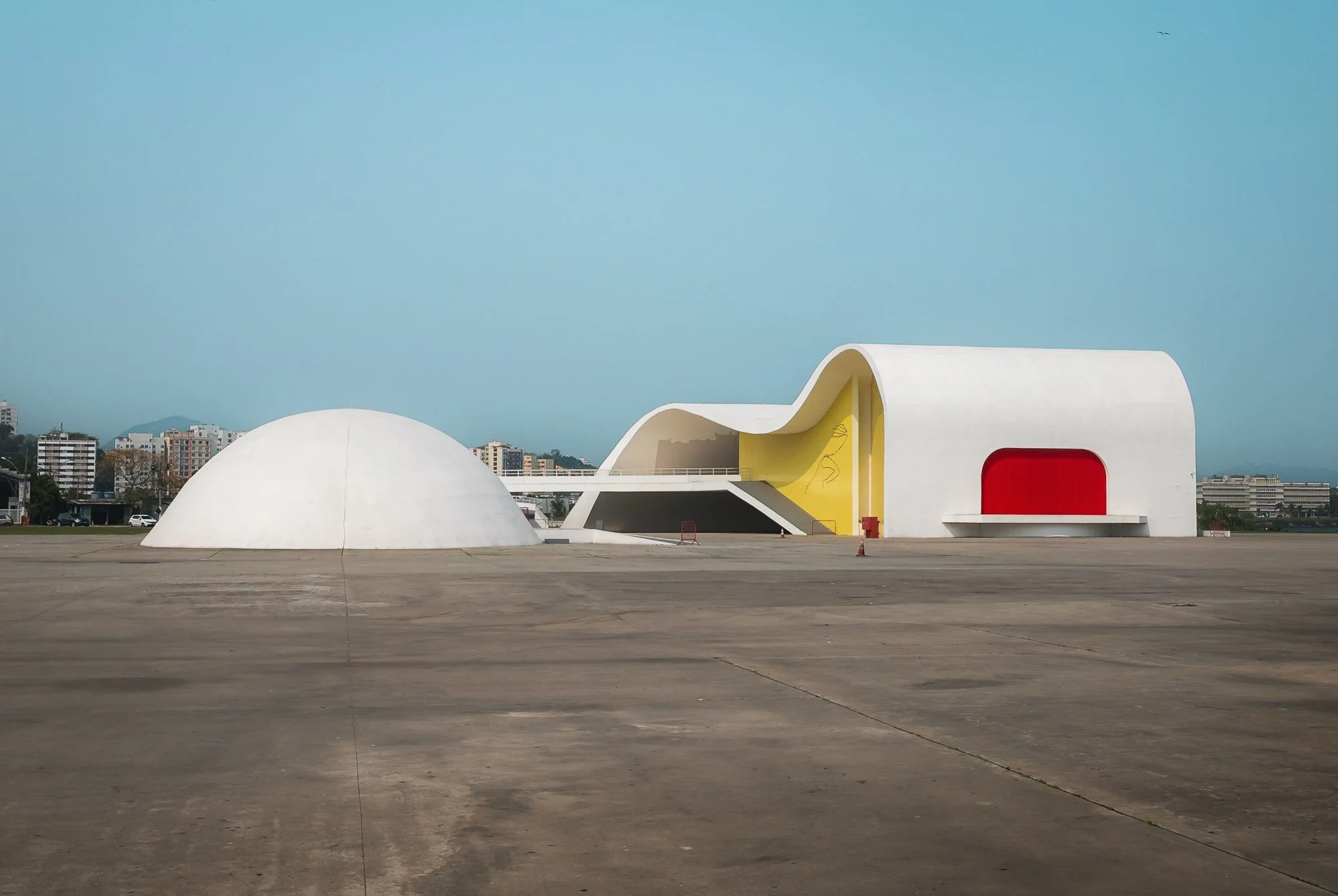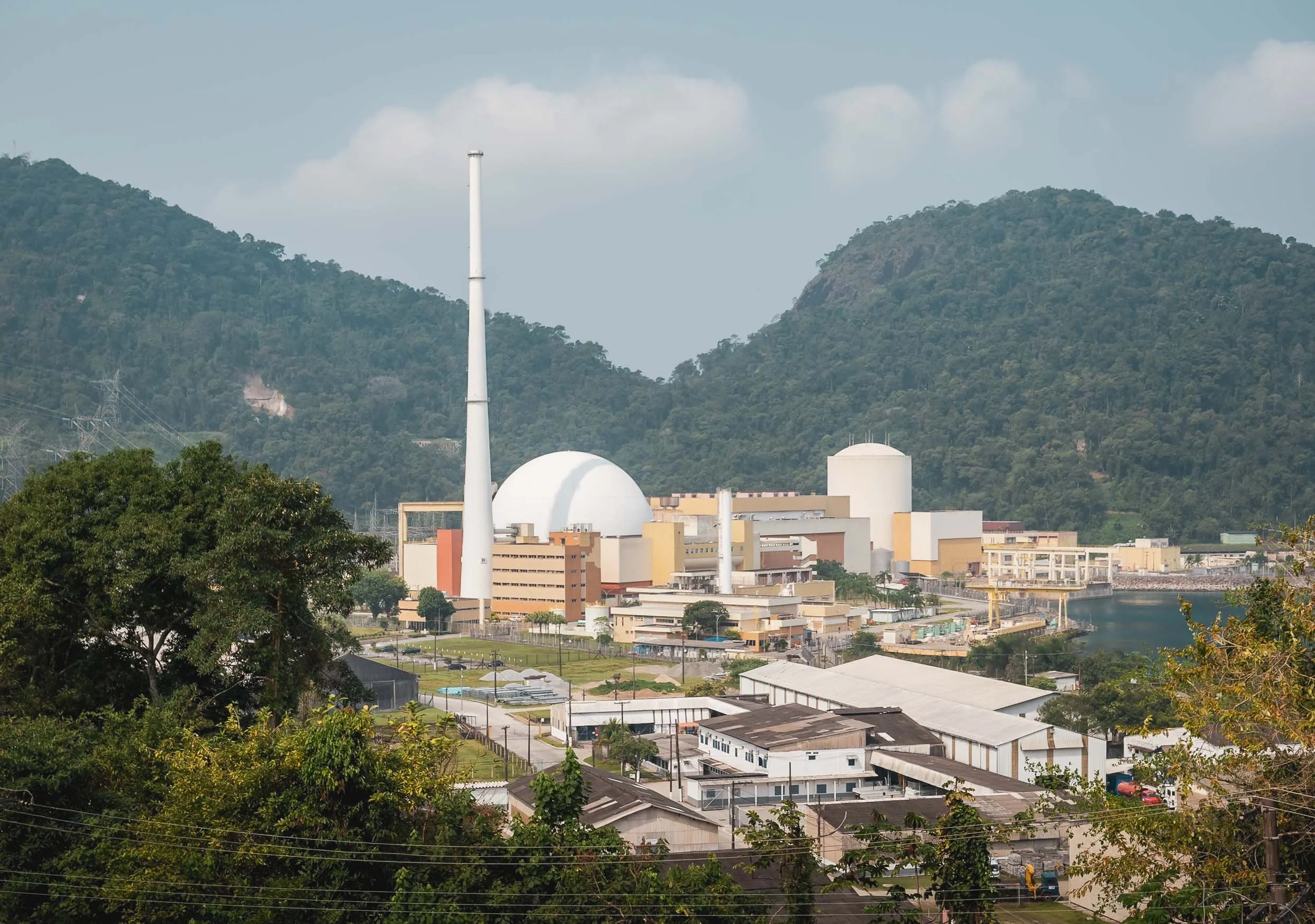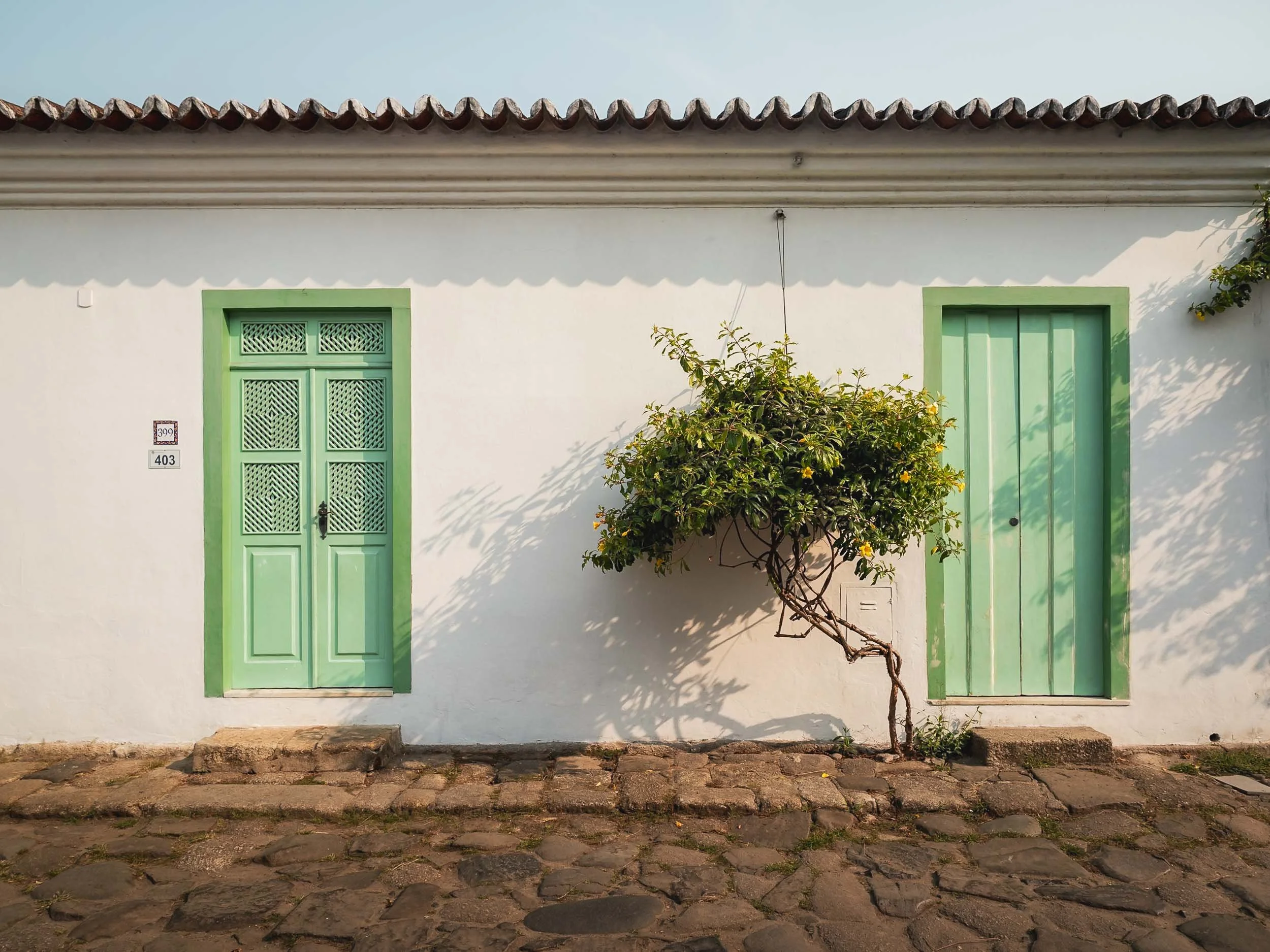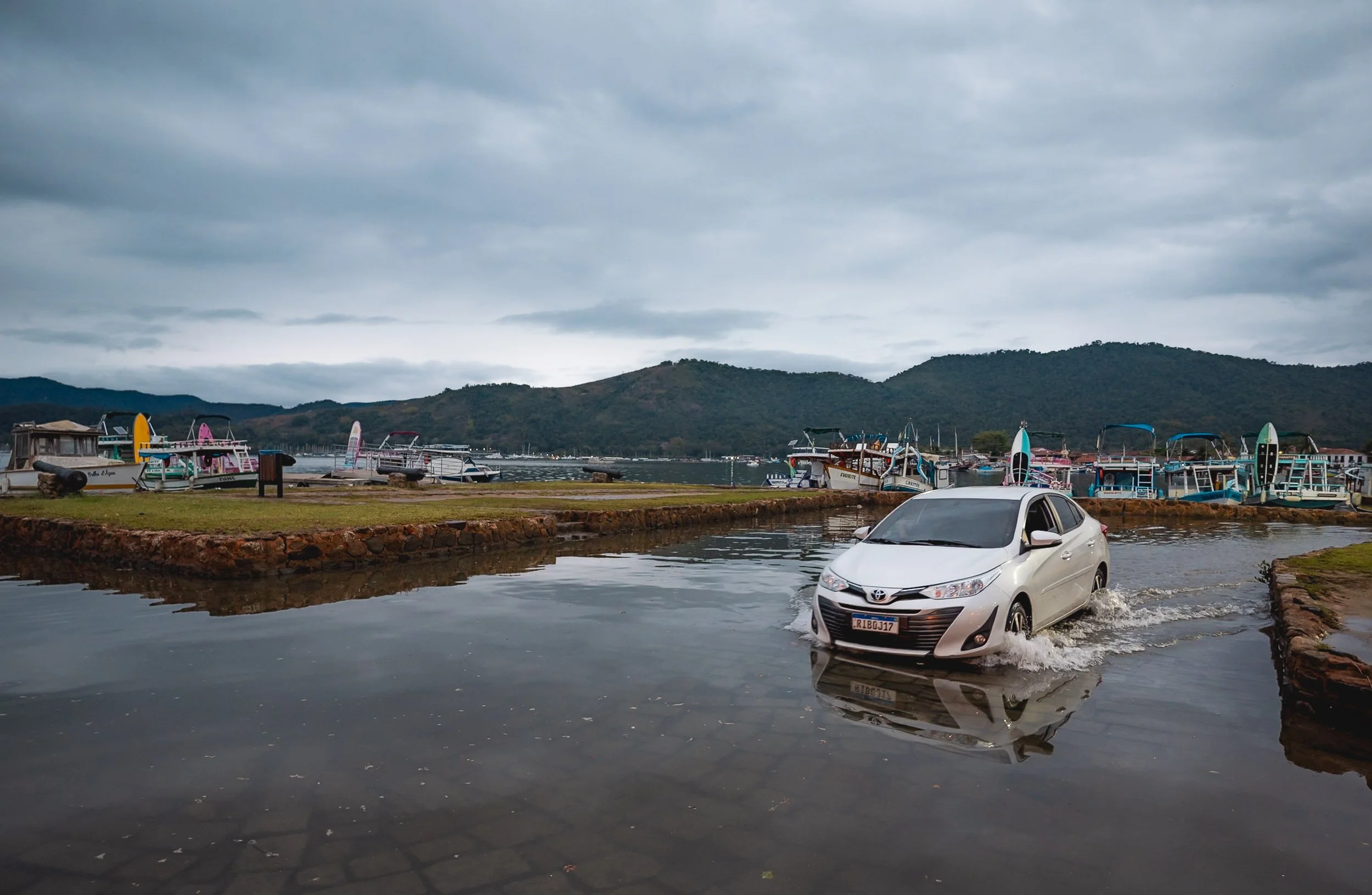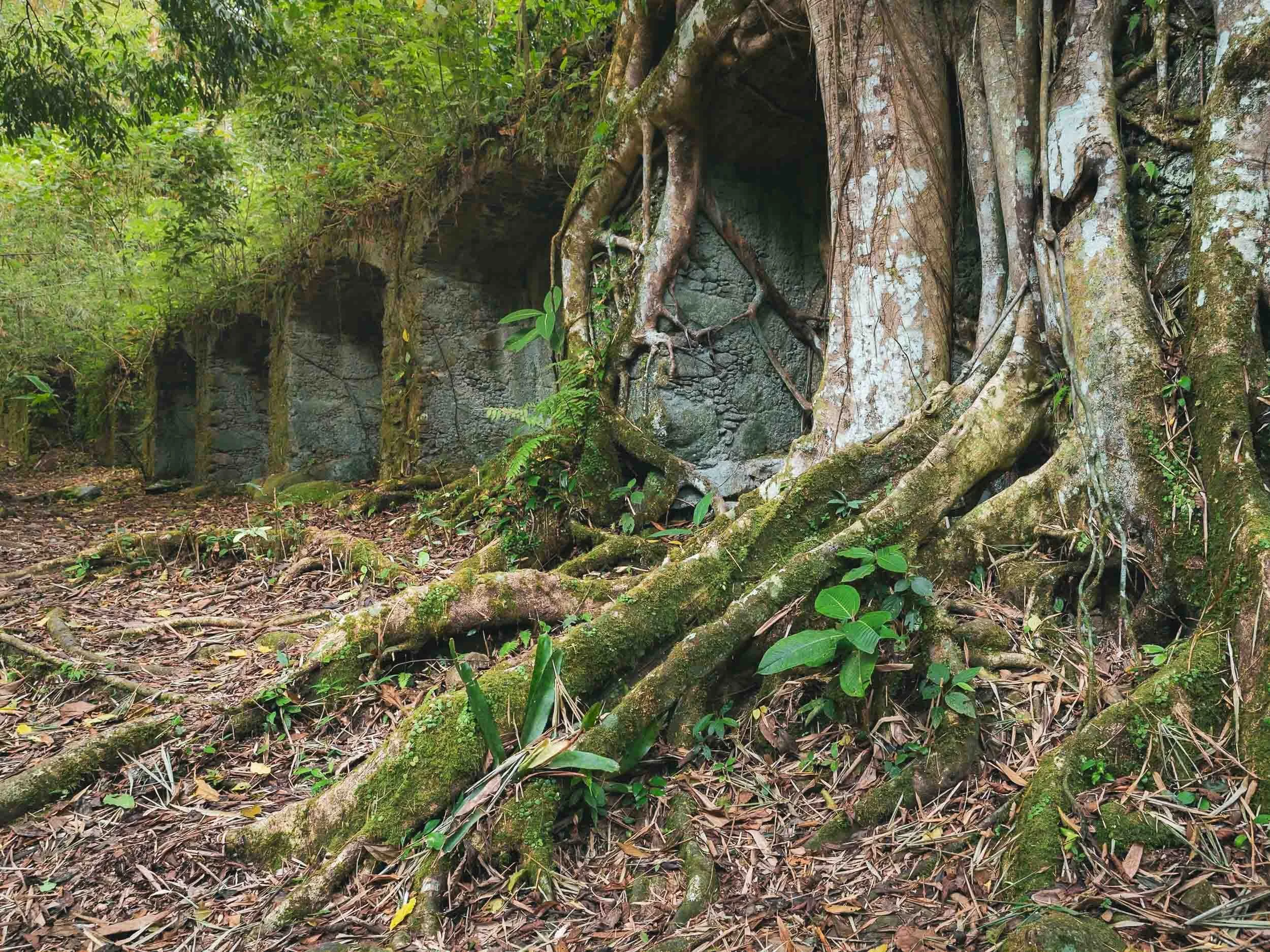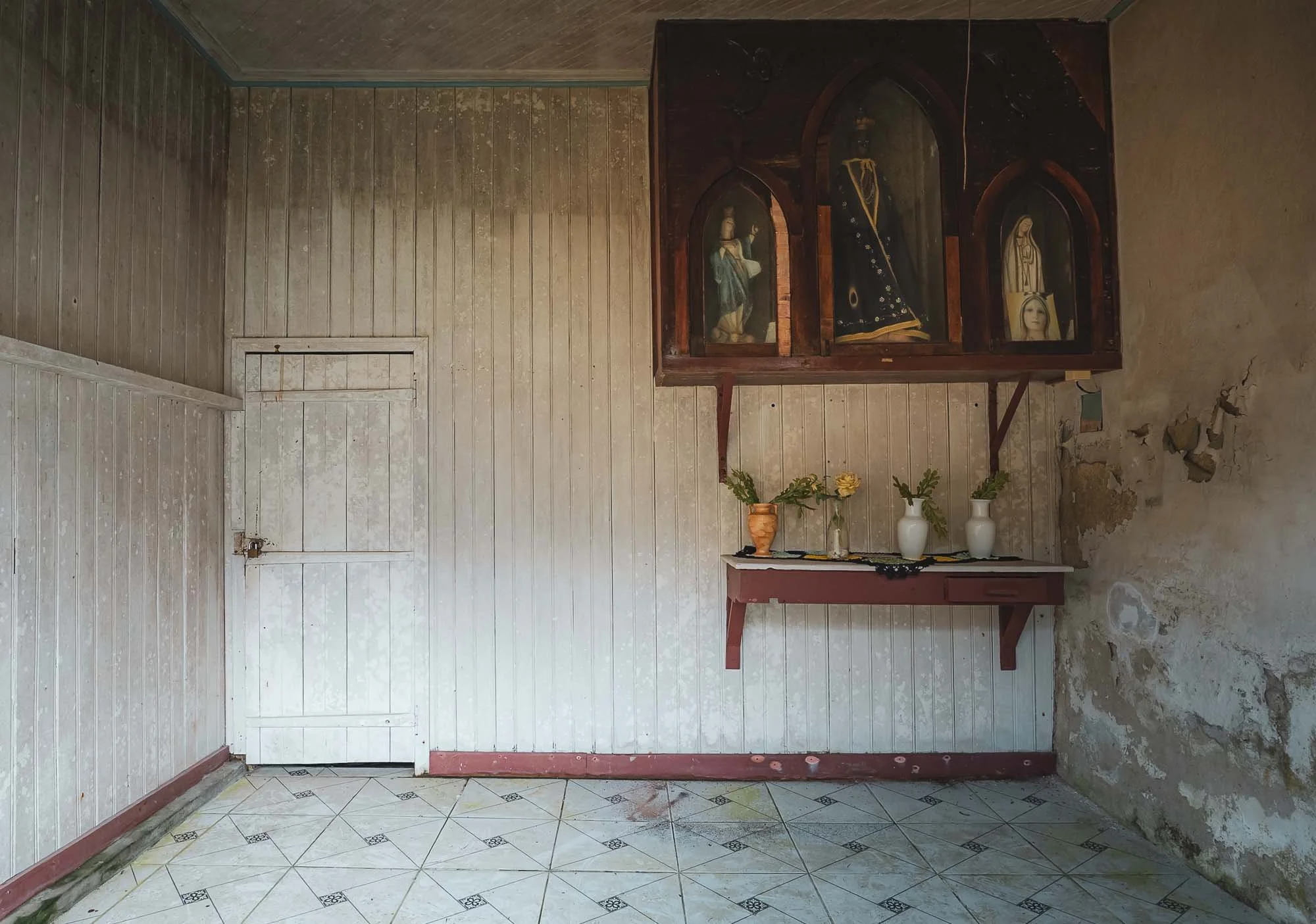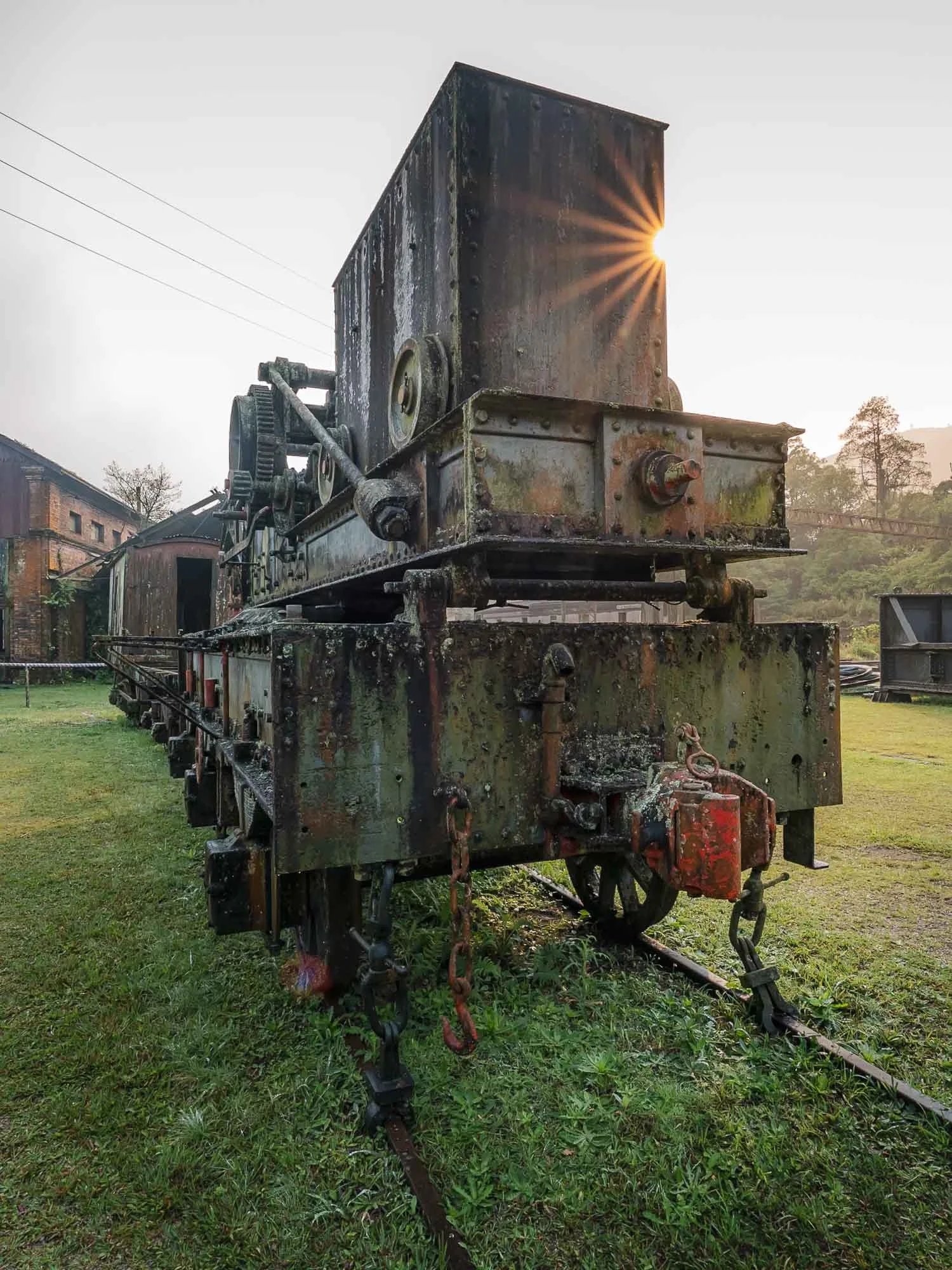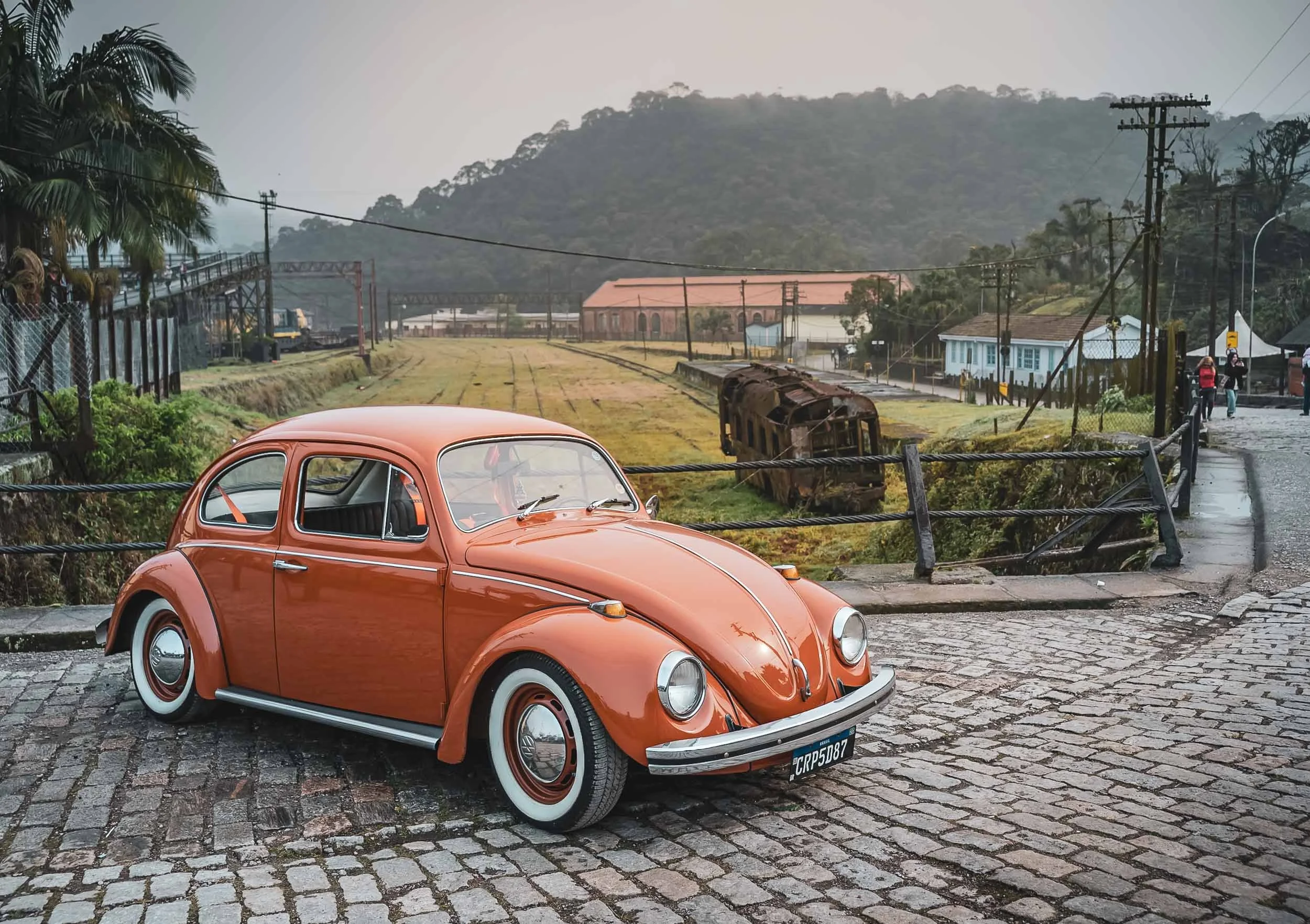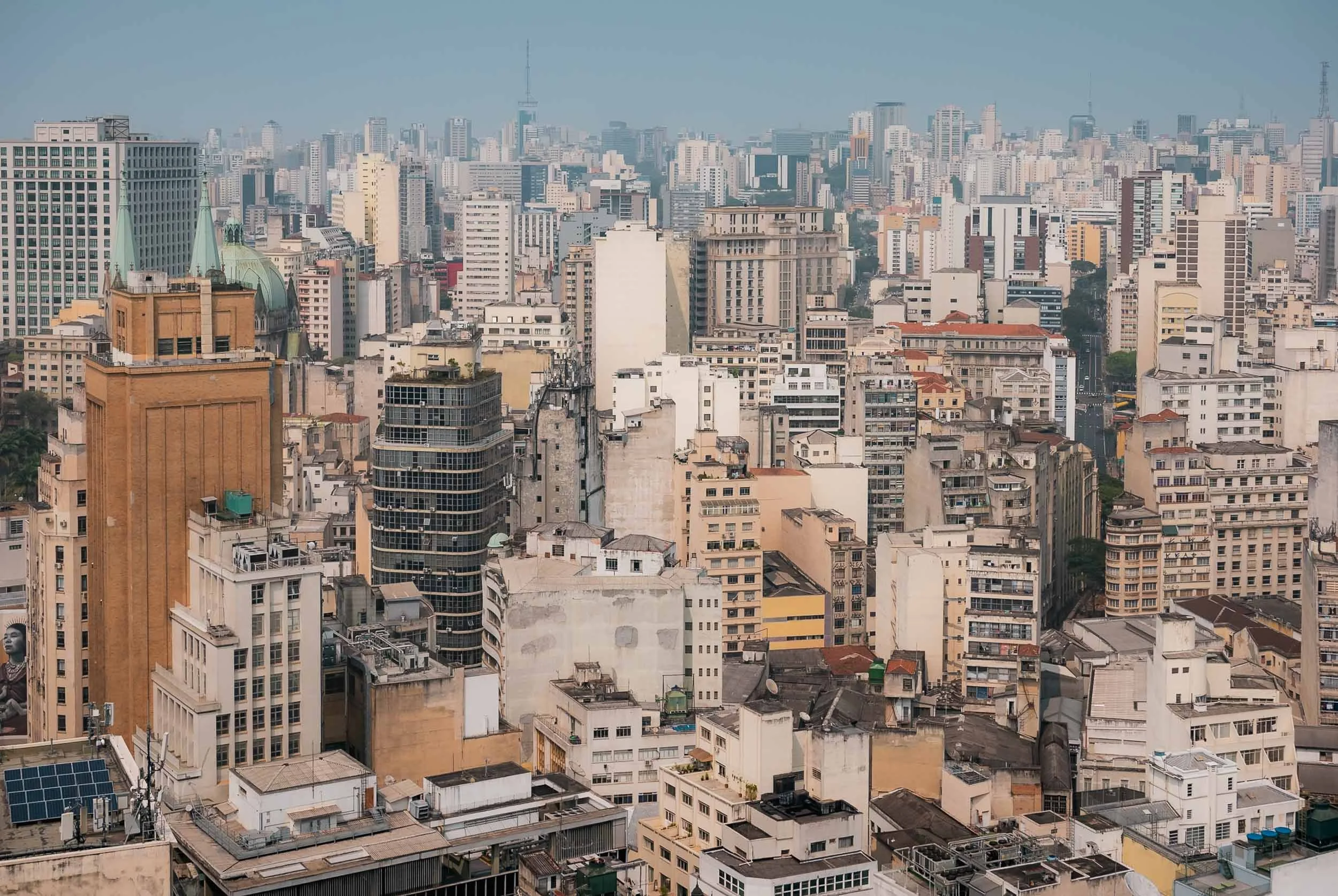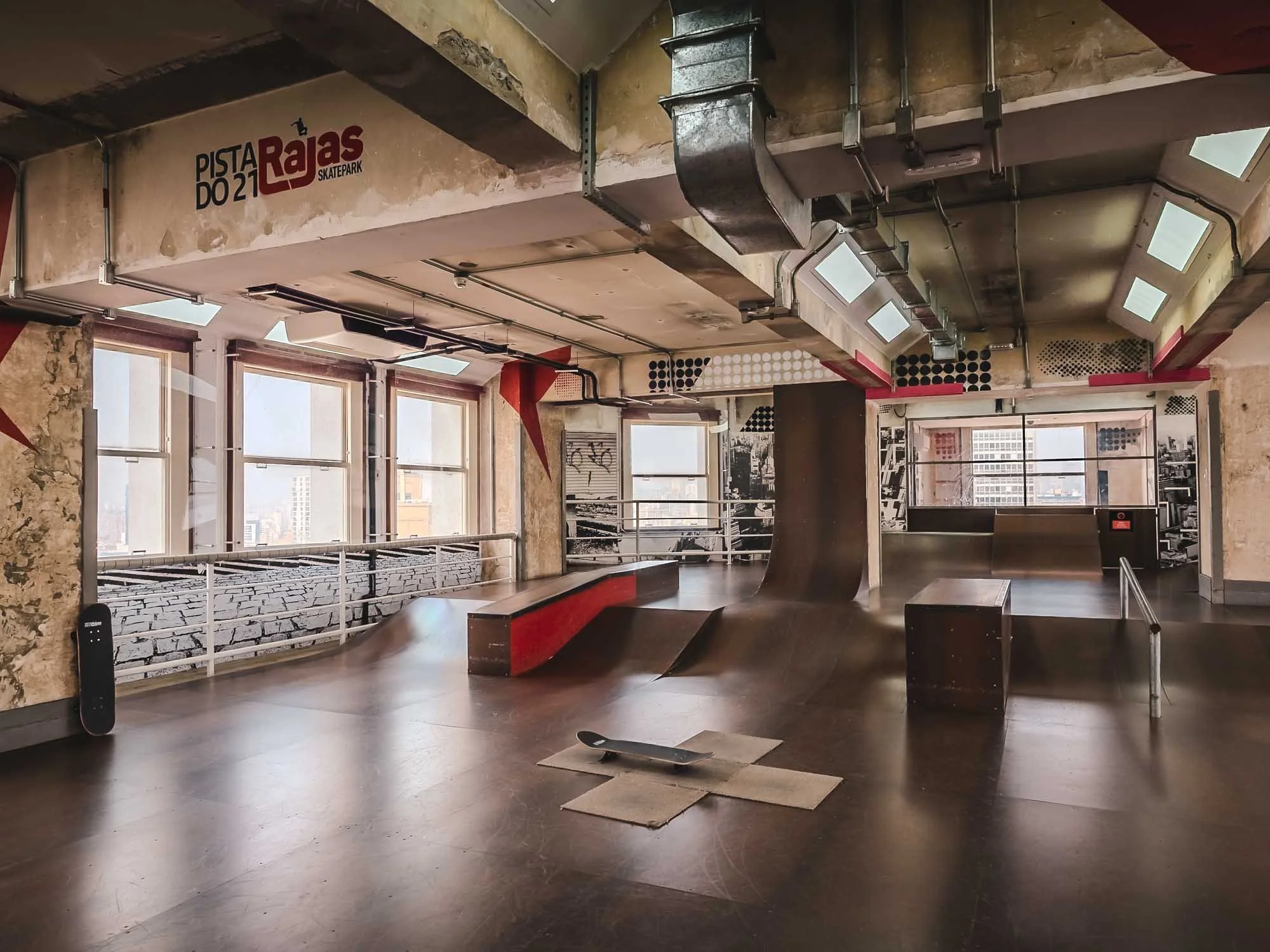From Rio to São Paulo, and in between
Exploring the famous coastal cities of Brazil, and a few sights on the way after my trip to the Pantanal.
During my first trip to Brazil, the priority was to photograph the wildlife and landscapes of the Pantanal and I couldn’t be happier with the outcomes (in fact, even National Geographic covered it 😃). But a few extra days in the country allowed me to spend some time in its most famous cities, with a small roadtrip from Rio de Janeiro to São Paulo, and some stops in between. Here are my visual (and a few other) observations…
I was curious what I would find during my days in the urban parts of Brazil - the combination of photographic opportunities, famous landmarks, beach lifestyle, and the seemingly ever-present safety concerns should make for an interesting mix. I arrived in Rio in the late afternoon and got a first glimpse of its famous beaches from the rooftop of my hotel at sunset.
Rio de Janeiro
I only had a couple of days in the city, so we started early on the first morning to get an overview and capture the sunrise views from Mirante Dona Marta.
The theme of safety became a factor here: ”starting early” in Rio is an interesting experience, as many people would rather not walk to their cars or drive while it is still dark outside with much less police presence. My guide, a German who lived here for decades, didn’t seem as bothered but also said he’d rather not go out that early if he could avoid it.
The view from here provides a first contrast of the favelas (an informal neighborhood) with the urban setting below - this one in the foreground is called Favela Santa Marta and features a small but popular Michael Jackson statue. It is a favela where guided tours are possible - many others are off limits to tourists (and really anyone not living there). The famous sugarloaf mountain is visible in the centre.
As you turn around, another famous Rio sight awaits in the distance: the statue of Christ the Redeemer.
The (unused) helipad also appears to be a nice spot for a romantic sunrise picnic, or so it seems.
On the way down from the mountain we stopped at Largo do Boticário, a group of brightly painted houses are a nice representation of late 18th century Portuguese colonial architecture. The square was home to the apothecary for the Brazilian royal family, and has been restored to now house a small hotel and homes mostly occupied by artists and writers.
Catedral Metropolitana de São Sebastião
Our next destination was an architectural one as well - after some breakfast, we came to Rio’s main church, intended to echo the ancient Mayan pyramids in a kind of brutalist way.
I can’t say its exterior is particularly appealing - especially with the unmaintained stained concrete walls - but it does provide an interesting contrast to the surrounding area in the centre of the city, home to a few modern skyscrapers with glass facades the church reflects in.
The interior is rather impressive though, and holds up to 20,000 people. Huge stained glass windows on all four sides culminate in a cross pattern at the top of the pyramid, with a large hanging Jesus cross above the altar providing a juxtaposition with the bare facade.
The church took almost 15 years to build and was completed in the late 1970s. It features a separate bell tower outside.
Rio’s architecture is an interesting mix of modernism and colonial heritage - sadly a lot of the latter buildings in the city centre are not maintained and gradually fall into disrepair.
Candelária Church
Portuguese colonial Baroque references also show in this church, combined with some neoclassical elements. The dome was once the tallest structure in the city, and the interior heavily redesigned over the years.
Remnants
The church is known for the 1993 massacre, where eight homeless people, including six minors, were killed by a group of men when they opened fire on the 70 or so children that had set up their makeshift homes on the square. Several of the shooters were members of the police and were tried for the killings, but only two were convicted.
The aftermath was severe and lengthy, placing the spotlight on police brutality, drug gangs and corruption, youth poverty and associated crime. Today a small monument serves as a reminder, alongside these 8 silhouettes on the ground in front of the church.
Mosteiro de São Bento
We moved on to another close-by religious site, an abbey founded by Benedictine monks in 1590, still operating today.
The interior of the church is known for its Baroque and Rococo-inspired decoration.
Sticking to ancient architecture: we encountered this small section of exposed remains of Rio’s early underground sewage system set up by Emperor Pedro II in the second half of the 18th century, as we walked towards more recent additions to the city’s architectural variety.
Museu do Amanhã
Specifically, we went to the newly redeveloped waterfront area at Pier Maua, a project executed as part of the reurbanization efforts during the Olympic and World Cup events. Its complex terraced steel construction is somewhat typical of its architect: Santiago Calatrava - I first encountered his work at the Lisbon train station back in 2008.
It sits on the lively Boulevard Olímpico and was opened in 2015. The museum houses exhibits around sustainability and innovation focused on - as the name suggests - tomorrow. I didn’t visit and hence cannot judge how well it delivers on these themes.
The Royal Portuguese Cabinet of Reading
Instead, we visited a library containing the largest collection of Portuguese texts outside of Portugal.
Not speaking the language, my interest centered around the beautiful arrangement of almost half a million books the library collected since its opening in 1887. They are arranged in book covering three stories around a central reading area.
Cine Iris
As we continued, my guide pointed out one of the oldest cinemas in the city, seemingly famous for its program of adult movies of all genres, often showing in the middle of the day - I am not sure how he was aware of this…
Arcos de Lapa
More interesting to me was the Carioca Aqueduct, built in the middle of the 18th century to bring fresh water from the Carioca River to the population of the city. From 1896 onwards it served as bridge for what is now Rio’s last official tram line.
Taking photos here was not something my guide enjoyed, as it is apparently not a very safe spot - indeed we got approached by several people and I put my camera into the bag the moment I snapped the shot I wanted.
Our next destination was a short drive away, and gave me the chance for a very quick stop at the so-called Sambadrome, the place where the Rio Carnival parade takes place. Outside of that, the arena is sometimes used for concerts and was also a venue for some olympic competitions.
The Maracana
What I really wanted to see though is one of the world’s most well-known stadiums, famous for its record-breaking attendance figures, said to have reached in excess of 200,000 people during 1950 World Cup final, just two years after construction started. Despite this, its official completion took another 15 years.
Pele scored his 1000th goal in the stadium in 1969, and it hosted concerts by Frank Sinatra, Paul McCartney, the Foo Fighters, and many more. It is also home to the city’s most famous football clubs, Flamengo, Fluminense, and Vasco, but its present capacity has been reduced to 74,000 spectators.
In the previous decade, the stadium was host to the 2014 World Cup Final and the opening and closing ceremonies of the 2016 Olympics. It fell into disrepair after, and the stadium tours were halted because of vandalism and robberies in the area. After a new management agreement was signed, it is now home to a small museum and the visitor ticket allows you to go up into the stands and put your feet on the pitch as well.
Vertical Rio
For the late afternoon, I had planned to explore the city from above and booked an open door helicopter flight. Rio is one of the few places that offers this kind of experience “by default” without needing permits or private helicopter flights. The weather had been mixed the whole day - small moments of sunshine but mostly clouds and even some rain as we explored the city. Most of the time, Christ the Redeemer, my main subject for the flight, wasn’t even visible from the ground. Although rescheduling was a possibility, my experience told me that sometimes it’s conditions that on the surface are less than ideal that then make for the most interesting photos…
Once I was up in the air after securing all my cameras, belongings, and myself, I knew my instinct was right. Couldn’t have been happier as I saw the clouds just about touching the ridges of the Corcovado mountain, and some haze and pollution giving the sunset a yellow tint.
I even managed to get the composition I first saw during the World Cup final coverage - including both the Maracana and the Christ the Redeemer statue in a single photo.
The art deco statue of Christ was constructed between 1922 and 1931 and is 30 meters high, making it quite small compared to other large statues around the world. It suffers from erosion and lightning strikes, and needs quite frequent repairs - the last major restoration took place in 2010.
Interestingly, Rio is also home to another famous statue - a copy of the Statue of Liberty located on the city’s outskirts. What makes this copy special is that it was created by the original designer Frederic Bartholdi (who was born in another city that has a replica).
Legs Out
At certain points on the route the pilot hovers and you get to hang your feet out the doors - not something I’d recommend while the helicopter is moving. A rare experience not possible in many places, so it’s worth doing! The Copacabana in the distance.
On my second day, we explored a few more the neighborhoods and hills of Rio, and I wanted to cross the bridge to Niteroi, where some further architectural highlights await. But first, we had the chance to get closer to the historic Santa Teresa Tram, first set up in 1896.
The hilly landscapes and neighborhoods around the Santa Teresa area on a quiet morning create a very different, artsy, calm, vibe, helped by findings such as this old VW Beetle, known as the "Fusca” in the country - it was produced here until 1996, way longer than anywhere else in the world.
The district is also home to some of the more peculiar architectural remnants, such as this castle-like house on the Rua Almirante Alexandrino.
Escadaria Selarón.
Descending from the hills, you arrive to one Rio’s most photographed spots: the Escadaria Selarón, a project started in 1990.
The Creator
The steps made of ceramic tiles from all over the world are the work of Chilean-born artist Jorge Selarón, who considered it a project that was never meant to be finished. Whether due to this mindset or not, he was found dead on the stairs in 2013, but is still permanently present on one of the tiles.
In the morning hours the 215 steps are still mostly empty, especially the upper parts, but it gets extremely busy during the day. I can imagine the people using the steps to enter their houses may find that less enjoyable, although this cat didn’t seem to mind.
Caminho Niemeyer
From here, we crossed the only bridge over the Guanabara Bay to the district of Niteroi - before the bridge was built in 1971, it was a 3h journey inland or a ferry ride to make it here from Rio.
Oscar Niemeyer is maybe Brazil’s most famous architect, known for his use of abstract forms and curves. He was instrumental in the design of the country’s purpose-built capital, Brasilia.
The reason I wanted to cross the bay was to see a set of organic buildings designed by the famous architect as a space for art, history & culture.
Niterói Contemporary Art Museum
Not far along the coast lies another of his works, the UFO-like museum of contemporary art.
Aside from the exhibition, the building features beautiful views across the bay from the large windows of its 50m cupola.
It is said that Niemeyer positioned and designed the building in a way that it would align with the sugarloaf mountain on the other side when viewed from the right angle - I checked and it seems plausible!
As we returned back to Rio, I had one last sight on my mind - a walk through the city’s botanical garden. It is part of its UNESCO World Heritage area, which represents the significance of the unique interplay between sea, mountain, beach, and urban features taking place here.
It is home to the Avenue of Royal Palms, a collection of 134 palms that all descended from the same tree, and reach a height of 40 meters.
A brown capuchin monkey and one of the many large trees that were planted here in the time since the garden was established in1808, originally to acclimate plants the Portuguese brought to their colony from around the world.
After we returned, I spent a few minutes at sunset on the Copacabana just in front of my hotel, observing one of the reasons why Brazilian footballers are said to have the best technique on the ball: hundreds of people of all ages and genders were playing on the beach, whether casually or in organized groups. And that was my last impression of Rio - architectural diversity in a beautiful natural setting, with an upbeat vibe that is somewhat muted by the ever-present safety concern, with unmissable poverty, and the occasional hints of the uncontrolled informal gang governance.
An early start the next morning would take me towards São Paulo, but not without a few stops.
Hangars & Reactors
Some of those stops were at rather peculiar places: the first was the zeppelin hangar at Santa Cruz Air Force Base, one of the world's last well-maintained airship hangars.
For weeks my local contact and I had been trying to get a permit to be able to access the hangar from the inside, but without luck - as we arrived, the military unsurprisingly didn’t spontaneously let us in either, so the only view I could get was from a distance. Even that turned out to be difficult - the whole area is fenced off. In the end a local woman living in a house on the surrounding road kindly allowed me on her balcony to take this photo.
Irritatingly, after we had already moved on and drove a further 2 hours, we got a call telling us that the employee who normally handles these requests was on holiday and she was now back and would be able to give us a permit. I was tempted to turn around but it would have derailed a lot of our plans, so I reluctantly let go of the idea to stand in a Zeppelin hangar.
Instead, we stopped at Brasil’s only nuclear power plant. The multi-reactor facility started operating in 1985, and is still being expanded.
Paraty
My overnight stop on the way to São Paulo was Paraty, a well-preserved colonial town listed on the UNESCO World Heritage List for its car-free, cobblestone city centre, which has not changed much for the last 250 years.
It’s the western-most city of the state of Rio de Janeiro, and lies more or less half way between the two cities, 300km in each direction.
What adds to the unusual charm of the city is the fact that its centre floods almost every day depending on the height of the tide, turning the streets into little rivers. Apparently this was by design, to help keep the cobblestone clean - the house entrances are slightly elevated with at least a step or two at every door step.
It’s this unusual feature along with the beautiful architecture, its history, the many islands in the bay, and regular events, that made the town a tourist attraction.
Small wooden bridges and elevated sidewalks help to keep your feet dry when navigating the roads - not always successfully, I might add.
As I walked the streets trying to avoid soaking my shoes or twisting my ankles (the cobblestones are huge, bumpy, and full of holes) I had a few beautiful encounters of the feline and musical nature, getting the chance to meet and photograph an elderly singer who recorded a promotional video for her upcoming performance in a small designer store.
I took another walk during blue hour the next morning, as the water just receded again from the nightly tide and the town was still empty.
The road in front of the city’s oldest church, the Capela de Santa Rita from 1722, is one of the last places where the water drains back into the sea…
…which makes the morning commute rather interesting.
Further into the harbour, I encountered a few boats on the pier that didn’t seem to be in their best condition. That is seemingly not a coincidence or matter of maintenance: from what I’ve been told, recent years have seen heavy competition among operators attracting tourists to the various islands and beaches on the bay. Competing on price to do so is not judged upon with favor - in fact, the opposite, and captains who don’t adhere to the fixed price system may end up with a boat that is not going anywhere anytime soon…
Paraty’s historic claim to fame came from its use as an export hub for gold after the discovery of the world's richest mines in the late 17th century in the mountains further inland. It was the endpoint of the “gold trail”, a 1200 kilometer road that was built to transport the metal to the harbor. When pirates became a problem and the mines were depleted, the city’s importance faded.
Before continuing towards São Paulo, I explored these mountains myself with a short morning hike to a nearby viewpoint, offering an aerial perspective of the city and the many islands in the bay. Somewhere in the area lives the explorer Amyr Klink, who circumnavigated Antarctica in the late 1990s on his own. He was also the first person to row the South Atlantic, spending 100 days to make the journey from Namibia to Brazil in 1984. I added the books he wrote about his journeys to my reading list…
The Ubatuba Whale
Speaking of oceanic exploration, the city of Ubatuba just a few kilometres west of Paraty has an interesting sight to offer: a skeleton of a humpback whale that stranded here in 2000, triggering a frantic mission to somehow get rid of the stench of the rotting carcass. When all kinds of efforts to move the remains with tractors and other heavy machinery failed, the officials just dug a huge hole into the ground and buried the animal. 8 years later, the local public aquarium assembled a team to retrieve the skeleton and it was put up in front of the entrance, with a statue of the legendary ocean explorer Jacques Cousteau watching over it.
Ruins of Lagoinha
I planned one more stop before arriving in São Paulo that day: the ruins of Lagoinha, remnants of an old sugar mill of Fazenda do Bom Retiro and the pillars of the alleged first glass factory in Brazil.
Slowly reclaimed by the Atlantic rainforest, the scene feels like straight out of Indiana Jones.
I arrived in São Paulo late in the evening - and knew I was in the city as my (local) driver told me to stop using my phone in the passenger seat, as it is not unheard of that thieves break the window and snatch the phone when the car is moving slowly or stopped in traffic. We made it to the hotel without such incidents.
Paranapiacaba
The next morning I didn’t in fact stay in the city - an early start took me to a small municipality about an hour into the mountain ranges: Paranapiacaba (harder to pronounce than my last name..). It’s a sleepy, mostly abandoned place. Only a few hundred people live here.
This wasn’t always the case, and it’s the reason we visited: in the late 19th century it was home to 4000 engineers and workers operating the headquarter and station of the São Paulo Railway. Nowadays, trains have become a rarity but the track is still operational.
Many of the buildings around the railway have a very distinct British Victorian appearance, with red brick construction dominating the now mostly abandoned structures.
There used to be a small railway museum in the building to the left, but it seems to have been closed for a while - comparing its state with some older photos, it seems like it has been decaying for a few years. I only found out the museum was closed when I got there, but luckily I found a small (literal) loophole and managed to get access to some of the relics from the past in this area…
I’m not necessarily a huge train enthusiast, but who doesn’t like abandoned machines from a bygone era? I can imagine this place must be a paradise for someone who is a little more into this mode of transport - overgrown locomotives and wagons that have last been used dozens of years ago…
Even the old staff quarters were still visible - complete with the relics keeping the workers safe… I did wonder who put the flowers into the vases, as I didn’t run into a single soul around.
A set of old railway wagons in their home - which according to the “SPR” sign was built in 1900.
The railway primarily carried coffee between the port of Santos and the mountains inland.
In the 1980s, a working steam engine from the turn of the 20th century ran several times a day, originally used to pull inclined trains from the coast - no more unfortunately, although there is still a daily tourist train from São Paulo.
Not everything is abandoned here - some things from the past are kept in good condition.
Either way, a worthwhile visit to a colonial sight of Brazil, and kind of a hidden gem if you ask me - but maybe that’s because I like trains and abandoned things. The setting in the middle of the Atlantic rainforest is beautiful as well, the town is surrounded by greenery and hiking tracks for kilometers.
São Paulo
After returning, I had a full day to explore a little bit of São Paulo, Brazil’s most populous city. São Paulo was founded almost 500 years ago, and its metro region is home to more than 20 million people.
Urban impressions: the Consolação district to the left with its parish church, and a view of the city centre to the right, including the Art Deco Altino Arantes Building, once the tallest building in the city in the 1940s. The photo above is taken from its observation deck.
The Altino Arantes building is also home to the world’s highest skatepark in a building - not sure what this says about demand for high-rise units in the city, but a cool initiative nonetheless.
Leading the Way
As you walk around the city, you might come across these kind of traffic lights, with unique clues leading to different sights in each area…
São Paulo Cathedral
…such as the São Paulo Cathedral with the statue of Apóstolo São Paulo in front of it (and a demonstration in the background, the purpose of which I cannot recall). The Neo-gothic church was only completed in 1967 and is the largest in the city.
The interior of the cathedral - an interesting mass was going on here, with almost only men in attendance. I couldn’t figure out why though, if anyone has an idea, please do share.
It was a Saturday, where some of the main elevated highways are closed off for pedestrian traffic, creating a car-free area for walking, running, cycling, and people to have gatherings.
Urban Finds
Common sights in the city are unfortunately also the many abandoned buildings with the historic colonial architecture, and - more fortunately - a lot of amazing murals, covering entire building facades. This one is by Hanna Lucatelli - her goal is to infuse a sense of strong women into the streets, which she says generally have a more masculine energy.
In the late afternoon, we made our way to the final place I wanted to see, located in Paraisópolis, the city's second largest favela. The huge informal housing district is surrounded by parks and skyscrapers, creating the intense contrast many of Brazil’s urban centers are notoriously famous for. Taking photos here is not something you want to risk - and indeed, entering without a local contact person is not a good idea. But - I did have a contact person and a reason to go.
Casa de Pedra
The reason was this man and his house. The eccentric home of Estevão Silva da Conceição, known as the "Brazilian Gaudí", is truly an extraordinary place.
That’s his living room, where we had some tea and he told us the story of his incredible house, which covers several floors and has been a work of love for the past decades. Each room is defined by organic shapes and covered to the last square centimetre with artifacts he collected over the years, mostly plates and similar objects.
If you look hard enough, you’ll surely find some of your favorite things in here…
…if not on the ground floor, just take one the tiny ladders and squeeze through a small hole into the second floor. Or third floor. Or fourth floor, or the roof. The house is an endless collection of art, but the higher you go, the less busy it gets - Estevão is still working on the upper parts. Luckily his family was around and made sure we didn’t get lost.
The artist speaks with a lot of passion about his project. Even though it’s been over 30 years, as he explains while showing us a book with images a documentary photographer took at the beginning of his journey, he knows the origins of many of the pieces used to decorate the house.
The roof of the house above the entrance to the left, and his ongoing work and yet to be used pieces on the right. A place like no other, both for its interior, its artistic commitment, and its setting.
As we headed back to the city centre, the unexpected traffic was an indicator of something out of the ordinary occurring: it turned out to be a large political demonstration on Paulista Avenue, one of the main arteries of the city. The road was closed off to cars, and thousands of people roamed the street - alongside a similar number of policemen (and maybe women) - which to some extent gave me some confidence to walk around and try to get some photos.
Surprising no one that knows me, one reason I wanted to take a walk here was this rather special McDonald’s, named after its local nickname and to celebrate store number 1000 in the country. Its design seems inspired by the White House (which nowadays is probably a good customer)
The interior was equally appealing to me!
I got some photos of friendly protestors left on the street, although the main demonstration had ended a few hours ago. Brazil’s political situation has been messy over the last years as the former president is facing legal proceedings. When I was in the country, access to X was blocked after disputes between Elon Musk and Brazil’s supreme court, which had moved to curb extremism.
It was dark after I had my well-deserved burger, and the police decided it was time to empty the streets, forming a long line and pushing everyone out, making for a quite interesting scene - that was also the end of my time here, as I flew out the next day. One morning visit to the Museo do Futebol (worthwhile, really quite cool!) and my time in South America’s largest country was over - for now.
Some final words: To what extent the danger of robberies, assault, theft, etc are exaggerated or a true risk is probably subjective and sometimes hard to tell - but as a photographer, it was common for guides, drivers, and hotel staff to tell me to keep my camera in the bag while walking around, avoid using your phone in the streets, and not to go out at night - in both Rio and São Paulo.
Beyond statistics it’s also a matter of perception, and for me this is what created an impression that would always make me favor many South-East Asian cities or the GCC in terms of feeling safe to just walk around with a camera anywhere anytime. On the other hand, it would not keep me from going back, and I’d also not deter people to visit either São Paulo or Rio de Janeiro (and for sure not Paraty) - they have a lot to offer. So do other parts of the country, and I might be back here soon!
Subscribe to my newsletter to get notified and don’t miss out on more Wonders of the Globe.
Other Recent Posts:
Patagonia - Pumas & Peaks
The Chilean side of Patagonia is home to incredible landscapes and wildlife, and I spent a week here to document some of it during the winter months.
In August of 2024 I finally embarked on a trip to one of the last regions on earth I had not explored at all: South America. The first blog posts are in: Tales of the Atacama Desert and the Wildlife of the Pantanal. There is more to come, and this is the third post covering my trip to Brasil and Chile: The beautiful mountain landscapes of Patagonia, and one of the incredible animals that inhabits them…
From Puerto Natales to the Peaks
I arrived in the small city of Puerto Natales from Santiago (with a short stopover, there are barely direct flights in the winter time), but didn’t spend much time in town, other than a short photography walk to the shoreline with my great expedition guide Rodrigo and his wife, who were to become friends with a lot of laughs on the following days.
Puerto Natales was formally founded in 1911, but its history goes back further than that, with Spanish explorers making visits to the area in the early 16th century in search of the Strait of Magellan and indigenous people having occupied this remote part of the world. First human evidence dates back more than 10,000 years.
Two black-necked swans with the Hotel Costaustralis of Puerto Natales in the distance. My actual destination here was the Torres Del Paine National Park, around 100km to the north, a UNESCO World Heritage Site (one day I should make a list of which ones I’ve seen…).
Torres del Paine
As we drove towards the park, the namesake mountain range came into view, with a beautiful sunrise awaiting at the Amarga lagoon.
Calm Waters
While the weather is a little colder in the winter, it’s much less windy (reflections galore!) and the late sunrise and early sunset makes the life of a photographer a little more enjoyable…Here is the same spot a few days later in different conditions.
The Paine massive with its three individual peaks reaching almost 2500 meters above sea level are definitely its most iconic sight, and the many lakes and lagoons provide a beautiful foreground. The peaks make for endless compositions, and we spent quite a bit of time around the area.
The park is quite popular - but that still only means around 250,000 tourists a year. Most of those come during the summer months, making the trails, camping spots and roads a little more busy - in August when I visited other people and cars were a rare sight.
The same can’t be said for the guanacos, which were definitely quite a common encounter. Closely related to the llama (and their cousin the vicuñas, which you will see in my Atacama blog), they generally live in herds and don’t mind the high altitude - their blood has 4 times the number of red blood cells as humans.
To the north of the park entrance is this viewpoint of the Cascada Rio Paine, a small waterfall on the Rio Paine, the water of which finally makes it into the Lago del Toro.
We made our way through the park for the rest of the day, stopping at a few more spots, including the Salto Grande waterfall that comes from Lake Nordenskjöld away from the mountains. Can you spot my guide in the left photo?
The waterfall flows through a narrow canyon into Lago Pehoé. A bridge once crossed the lake here, but it collapsed during flooding from what I recall.
Konkashken Lodge
My sleeping place for the next few days was this little hut on the banks of the Serrano river, just outside the park boundaries - amazing place to stay with a very hospitable owner and his family.
The river landscape in this area is incredible, with a number of small lodges and hotels scattered around on the right, and the nearby confluence of the blue Serrano river and the discharged water of the grey glacier - the latter was still on the agenda for my last days here, keep reading!
Contrasts
A few dozen semi-wild horses live around the park, one of which was grazing in the muddy waters and spotted by my drone.
A sunrise like no other…
The next morning had what was probably the most beautiful sunrise I’ve ever seen in store - and I almost missed it. In fact, I did miss the early blue hour, because for what was maybe the first time in my traveling life I actually properly overslept, falling back asleep after waking up and getting ready a little too early…Luckily Rodrigo banged on my door and we were off to capture the colors lighting up the mountain peaks from a small lagoon.
Cerro Paine Grande mountain is the tallest mountain in the park at 2884m, and reflected back on us in a different colour every 5 minutes. It’s peak has only been climbed four times.
The Cuernos (Horns) getting kissed by the first light. No editing needed - sometimes nature increases its saturation without human help…take a look at this clip of a few more beautiful landscape moments taken with my drone (flying outside the perimeters of the park is permitted).
Not every morning was equally as colorful of course, so sometimes you need to add your own bit of human made colour. This little red bridge leads to a small island which houses the Hosteria Pehoe, a restaurant and refugio - it was still closed, just preparing for its summer season.
Icey Start
While overall bearable, Patagonian winter temperatures at night fall way below freezing.
A morning photo as the moon set, and an evening impression from one of the many little lagoons around the park, with a small lenticular cloud wrapping itself around a peak. Winter is the time for reflections here, with very little wind, which is rare in the summer, when there are warning signs on many of the roads and wind speeds commonly exceed 100 km/h.
Burnt Victims
A few parts of the park show the devastating effects of fires caused by tourists. Over the last decades, three incidents that destroyed over 150 sqkm each occurred, the last one in 2012.
While the dead trees that remain make for beautiful haunting photos, they are a reminder of how fragile the ecosystem is. Having said that, research has shown that naturally occurring fires have not been uncommon in the area for thousands of years.
Puma Quest
Although the landscapes were beautiful and not to be missed, my primary priority was to find and photograph another big cat for the collection (see here for some jaguar, snow leopard, and leopard photos, for example). This area is probably the world’s most famous to see the puma, often referred to as cougar and - aptly, given their appearance - mountain lion. Many documentaries by the BBC and National Geographic have been shot in and around the park, which would probably mean it’s good enough for me as well, just about…
On the lookout
Rodrigo scanning the mountain ranges for signs of the elusive cats.
We dedicated most of the mornings and late afternoons of the six days I spent in Patagonia to areas where pumas are frequently sighted, keeping an eye out for alert guanacos (or their complete absence, which is also a good indicator), prints, or other cars tracking them. Although there are estimated to be around 200 individuals in the territory, the first three days were not successful, and as the days dwindled, so did my hope for a good sighting.
While there was no pumas to be found for the moment, the guanacos served as decent alternative wildlife subjects.
Another common sight is the crested caraca, one of the large birds in the area, and they have gotten used to humans. In fact, the ones living near the Pehoe camping site, where we stopped a few times, are almost pets.
One more interesting species to observe when looking for pumas is the Andean condor, as they often follow the cats in the hope to scavenge on the remains of a kill, or even harass them to get their share. With a wingspan of over 3m and weighing 15kg, they are considered the largest bird of pray in the world and have an impressive lifespan of 70 years. The species is considered vulnerable today.
On the fourth afternoon, we once more made our way through one of the roads less travelled in and around the park, sleepily looking for puma clues after a nice lunch. But the sleepy vibe changed within a second, when suddenly, not one, or two, but three puma appeared just a hundred meters away from us as we crossed a small hill. Before we even realised what was happening, two of them dashed off over the hills into the distance. We suspected they were two younger brothers but could barely catch a glimpse of them. That left a large female gently walking on the slope besides the car, just 20 meters away.
The Sighting
At first she stalked and smelled the tracks of the two young puma that had just ran away, but didn’t seem particularly eager to chase after them.
A few moments of focused observation in the taller grass and bushes seemed enough to be sure the youngsters would not bother her again.
Crossing
Once she had made sure the intruders were nowhere to be seen, she changed direction, came down the slope and crossed the road, at which point we slowly scrambled backwards to give her space. Pumas in this area have gotten used to humans around, and don’t see them as a threat (or source of food) - that’s unlike anywhere else in the world, where this would be a very dangerous situation.
That’s not to say you should try and pet these large cats - keeping a distance, never cornering them, avoiding sudden movements and sounds, and observing their behaviour closely, are the key.
Notice the huge paws, the cut in her ear and slightly grumpy face, which gives her a very characteristic look - if anyone knows the name of this individual, please leave a comment!
She took a moment to chill in the short grass on the other side of the road, with the dramatic Patagonian mountain ranges in the distance, before making her way across the ridge, where it became impossible to follow her.
Queen
What an encounter! We probably spent almost 1h with her, observing different behaviors with no other soul in sight, in beautiful conditions.
Tip: One thing that I always find really useful when photographing unpredictable scenes like wildlife is to carry two camera bodies with different lenses with me - it’s hard to switch lenses in the field, and you risk missing the action. I used a previous Olympus flagship model for the wider angle photos here, and it is quite affordable nowadays, perfect for these situations.
Take a look at this video for a few clips of this amazing moment.
A few days later we did in fact have another Puma sighting in the very last light of the evening - this is the best photo I could get before it disappeared, putting the quality of the first sighting into perspective…
Puma Presence
We came back to the same area the next day, but she and her two companions were nowhere to be found. Instead, we opted for a small hike along the hills - probably crossing her territory. Guides are mandatory due to the presence of the cats, but the goal this time was to see evidence of humans, rather than cats.
There are a few places in and around the park with pre-historc rock art - this one is fairly easily to reach after about an hour of moderate hiking. These petroglyphs are from the ancient Aonikenk / Tehuelches culture, the nomadic tribes that once inhabited this area. The paintings on the cave ceiling in the left image are about 6500 years old.
Lago Grey & its Glacier
The quest for these big cats was also the reason landscapes and the longer hiking routes to or around the peaks (which can take 5-10 days) had to take a backseat - plus, the rising moon (and frequent clouds) didn’t make Milky Way photography an option during my visit, but I may be back for that…
Having said that, I moved to a different hotel for the last two nights, this time on the west side inside the park to explore its most famous glacier, feeling a little bit more relaxed after the successful Puma quest.
The calm shoreline of Lago Grey at sunrise, with the glacier just about visible as tiny bright blue spec in the distance on the left. In fact though it’s almost 6 kilometers wide, and the front face over 30 meters tall.
Iceberg Alert
It regularly calves, leaving large floating icebergs in the water, which gently make their way to the shores of the lake, where they slowly melt away.
The goal was to get much closer though, taking a boat across the glacier lake for a better look at the details. I had the chance to explore glaciers in Alaska before, and while there are always similarities, every one is its own incredible feat of nature, with the heavily compressed blue ice slowly pushing its way down the slopes.
As the boat approaches, temperature drop noticeably and more and more ice appears on the lake, with the beautiful backdrop and earthy colors of the mountain ranges.
The glacier belongs to the Southern Patagonian Icefield - at almost 17,000 sqkm, it the world's second largest contiguous extrapolar ice field (the biggest being in Alaska).
Patagonia Aesthetics
Thev view towards the glacier from Hotel Lago Grey. Look closely to spot the boat that takes you close to the glacier.
One last morning view over the Cerro Paine Grande and its icey snowcapped mountaintop from a small waterfall near the (very expensive) Explora hotel. We saw a number of Puma prints here, and the accompanying smell also indicated they may have been here the night before, leaving their marks, but remaining unseen - to us anyway. But we had our moment.
And that was it from my trip to Patagonia, but I would say chances are high I might be back...
Disclaimer: This post contains a sponsored link from which I earn a small amount, but all the content absolutely represents my true opinion and is factual to the best of my knowledge.
Subscribe to my newsletter to get notified and don’t miss out on more Wonders of the Globe.
Other Recent Posts:
Wildlife of the Pantanal
The world's largest tropical wetland: Jaguar paradise of the world, and quite a bit more.
It finally happened: After visiting more than 80 countries, I finally made it to South America. Specifically, starting in Chile, but my next destination was Brasil, including the northern Pantanal, and for no particular reason at all this area will be the subject of my first blog post from the continent.
The Pantanal is the world's largest tropical wetland, covering almost 200,000 sqkm over parts of Brasil, Paraguay, and Bolivia. It’s also a UNESCO World Heritage site and a Ramsar wetland.
I limited myself to the northern part in the Brasilian state of Mato Grosso, but there is a chance I’ll be back for more…
There are a few reasons to visit this rather remote part of Brasil, but one stands out above all: It’s the best place in the world to see Jaguars, and that was also my primary goal. So after a long trip from Santiago and landing in Cuiaba in the morning, no time was wasted and I was off to meet my amazing guide Guilherme from Pantanal Photo Tours for the 5h drive south towards Porto Jofre. The so-called Transpantaneira road is somewhat dusty and bumpy, but provides a first glimpse of wildlife, especially in the dry season, and we indeed spotted our first bird species and a good amount of caimans in the various water ponds. There was once a plan to extend the road through the entire Pantanal for several thousand kilometers, but that never happened - probably for the better.
It was an unusually cloudy and cool day - something extremely rare during this time of the year, and I would soon realize I should have enjoyed it a little more, as the next 5 days would become very hot and dry.
Arrival Greetings
We arrived at the small harbor of Porto Jofre (barely a village) and climbed into our little boat on the way to the Panoramico, the houseboat that would become home for the next few days.
I knew that this area was famous for Jaguar sightings, but I was barely prepared for what was going to happen - within 15 minutes on the river we saw not one, but three Jaguars on the river bank: a mother and her two teenage cubs.
Luckily my camera was in my hands - I’ve learnt a few lessons over the years to always be ready. Hoping this was an indicator of the days to come, we arrived at the houseboat at sunset.
Giant River Otters are a Thing!
Sunrise from the houseboat as we got into our little boat to start exploring the Cuiaba river on the first day.
After this very early morning start, one of our first sightings was a Tapir from afar, but these shy animals disappear into the bush quickly after drinking - we were going to get another chance later though. Instead, an animal I didn’t have on the radar made an appearance: the Giant River Otter. These endangered mammals can grow almost 2 meters in length, and live in small family groups.
Their size starts to truly stand out when they are out of the water (a rare sight), such as this one close to their den. We saw three different family groups in total.
Poaching for pelts was a huge issue for the species in the past. There are only 5000 or so individuals left in the wild, but the Pantanal supports a healthy population. They are apex predators, eating anything from fish to even small caimans, and are incredibly noisy, as I witnessed first hand - when agitated or trying to communicate, they vocalize very loudly and the video I recorded is rather hilarious.
A more common sight is the Yacare caiman - it’s also the reason Jaguars are abundant here and often easy to spot while they explore the river banks in search for an unsuspecting individual that could make a good dinner. It is estimated that there are around 10 million individuals in the Pantanal alone. One less if we deduct the one on the right…
Another caiman seen from the roof of the houseboat - let’s say you shouldn’t put your hand out too far while walking along the sides.
Beautiful varied vegetation and riverbanks make up the landscape here - the diversity of flora is incredible and its growth is primarily limited by the water-stressed dry season.
The Hunt
My second day had the most incredible sight of the trip in store. We had been following this female Jaguar slowly exploring the banks of a small channel for more than one hour, with just one other boat joining us. She was on the hunt and looking out for caimans resting in the hot midday sun, and we anticipated she might go for a large one we spotted exposed on a little sandbank. However, a few dozen meters before reaching it, she disappeared in the thick bush, and we almost thought she missed it - only for her to come around from the other side, carefully approaching.
She took cover in the bushes, and waited for a few seconds. From this moment on, things happened quickly. One leap towards the caiman, which sensed the approaching danger and tried to make its move into the river - but the second leap was enough for her to land on top of the reptile, now both in the shallow water. A bite through the skull delivers a fatal brain injury - Jaguar’s have the strongest bite of any cat - and the caiman does not stand a chance anymore.
Although the caiman was larger and heavier than her, she dragged it up the river bank without much struggle. Not surprising, looking at those muscles… She disappeared into the vegetation and the entire spectacle was over. There are just 4 seconds between the first leap and the photo to the left.
After having seen a snow leopard hunt this was another piece of evidence of why cats - big or small - truly rule the planet.
The Quiet Parts
With some Jaguar sightings under my belt, including a hunt, I was happy to spend some serene early mornings in the smaller side channels of the rivers, enjoying the soft light and birdlife waking up - worthwhile when the main rivers get a little more crowded with dozens of boats cruising up and down in search for Jaguars.
The Pantanal is a bird paradise, and my guide helped me identify quite a few, from left to right:
Black-capped donacobius, Black-backed water-tyrant, Great kiskadee, and the Wattled jacana.
A capybara going for a swim in the channel. These large rodents (the largest in the world in fact) make up another major part of the local Jaguar diet.
Two more beautiful birds: the Orange-backed troupial and an Anhinga.
Jaguar Things
But you can’t spend time here without feeling the urge to go back and look for the big cats and see more of their behavior…
In the Water
Jaguars are extremely good swimmers and don’t mind the water - in fact, they enjoy a splash every now and then to cool themselves. Of course, it’s also part of their primary hunting ground, with caimans and capybara often trying to escape into the river.
Typical hunting means scouting on the riverbank as it gets hotter during the day, hoping to spot a caiman sunbathing, and timing the jump right. With some patience it’s not uncommon to observe these hunts, but more often than not, the action is hidden by the thick vegetation, such as on the right side - this Jaguar actually caught a smaller caiman and pulled it back into the thickets, but none of the struggle was really visible to the many boats surrounding it.
Another interesting observation was this juvenile male, which we followed for a couple of hours. He disappeared frequently, only to show up again few hundred meters on another river bank, sometimes even crossing the channels - we named him “flash”. His youth also showed in his inexperience, two or three caimans he had his eyes on were easily warned as he noisily went through the bushes and wasn’t as clever in his approach as the adult female earlier.
After a swim, a little shake is needed to dry yourself… Jaguars also need their scratch posts - this female found the biggest one available to sharpen her claws.
The Piquiri River
Although most of the action takes place on the larger Cuiabá River, one of its tributaries became a little hidden gem for us during these days, with fewer boats, beautiful riverbanks, and one or the other animal we had not seen before.
The prime example was this Brazilian Tapir having fun playing in the water, and even swimming towards us, showcasing its rather peculiar facial features, with the long distorted nose and wide ears. They are quite large and weigh over 200kg, but are still the smallest and also least vulnerable of the tapir species - vulnerable nonetheless.
A few more sights: A king vulture with its colorful head, a tayra, a rather unknown animal not often seen out in the open by the river, two Jabiru storks, and what I suspect is a green Iguana, who felt a little blue that day…
We also spotted this female here, drinking from the water during the last light of the day.
Two of the Pantanal’s famous bird: a Sunbittern, rather dull until it opens its wings showing the beautiful pattern (my guide told me he had a client spending two days just trying to get this photo, but I was lucky to just randomly take it) and the iconic Toco Toucan.
Wildfires are common issue in the Pantanal - while in many cases a good thing to revitalize the vegetation, they sometimes get out of hand. In 2020, over 20% of the wetland was destroyed by fires. During my time here, wildfires were also heavily reported in the news, but in fact were not an issue at all in terms of visiting the northern part. A hazy sunset on one of the days and the occasional evidence of past fires is all that you notice. Other threats to this paradise are more evident all around, such as the increased use for farming, as 99% of the land here is privately owned.
As with literally any place in the world, plastic reaches to this end of the planet as well. A Jaguar playing with a plastic bottle was one of the more sad sights I got to witness, seen here observed by one of the many touristic boats moving up and down the river, which is admittedly another problem for the ecosystem. Having said that, tourism can generally play a positive role here, with farm owners shifting from cattle and agriculture to instead protecting their land and turning it into lodges as a source of income.
As we left the houseboat back to the car in the early morning, the time on the river ended like it started: With another Jaguar sighting, most likely of the same female mother called Madaleina. She was named by my guide, who won this right by being the first one to spot and identify her a few years ago! The first sighting clearly was indeed an indictor of what was to come, with a total 22 sightings of (I believe) 15 different Jaguars in 5 days, with 2 successful hunts and a few attempts. It was almost too easy, but this is the ultimate big cat paradise - not to mention the birdlife and everything else. The Pantanal adventure wasn’t quite over yet, as I still had two days on land, for a slightly different environment.
Back o
n Land
Although its rivers are the area’s main attraction, there are a few animals you can more easily spot here…
Especially during this time of the year, fewer water sources make the Pantanal less of a wetland, and more of a barren dry area. I had two days to spend at a local lodge halfway between Porto Jofre and Cuiaba, with two goals in mind…But first, the drive had a few encounters with the Pantaneiros - the local population generally associated with cow herding - in store, such as this one crossing one of the many wooden bridges that are necessary in the wet season.
The amazing mix of Cambará and Tabebuias trees blooming in their rich colors. The flowering season just ended, but I still found a few beautiful examples.
Two female howler monkeys and a baby in the morning light. Notice the left one using its strong tail to grab the tree while scratching itself with the leg. Howler monkeys derive their names from its strong vocalizations which can be heard up to 2 km away - usually in the early morning at dawn. They are near threatened.
Another threatened species of monkey that can be found here is the capuchin - a little more engaging and active than howlers, they often come to the ground in search for food and water, while howlers remain arboreal most of the time and rest for the majority of the day.
Hyacinth Macaw
One of the main attractions and a goal to see for me was this pair of threatened macaw, currently nesting. The tree was literally opposite the door of my room, giving me a good opportunity to observe them flying in and out. It’s the largest flying parrot species, reaching around 1 meter in length.
Their nesting behavior is highly interesting, and very vulnerable: they rely on the manduvi tree, which when older than 60 years starts to feature sufficiently sized holes that the macaw can enlarge and fill with wood chips on the bottom. They then lay only one or two eggs, which are incubated for a month, and it takes another 110 days for the young to leave the nest. The chicks then depend on the parents for 6 more months and only reach sexual maturity after seven years. There’s a lot that can go wrong in this cycle, which is why they are endangered.
Only a few thousand remain in the wild, spread over three separate distant populations mostly in Brasil. However, they are still commonly found as pets all around the world, and are held in many zoos as well.
The area is full of different bird species, and although I’m not a “birder” (but you bet there were a few groups staying here who took their sightings very seriously and had daily reviews), I can appreciate interesting species such as the hummingbird (so small and quick it’s almost impossible to catch one on camera) and the woodpecker to the right.
But of course there are also a few more mammals to be found here, such as this Coati. Related to raccoons, their different species are widespread in South America, and sometimes even kept as pets.
The Ocelot
The second main reason to visit this place though is to find this territorial solitary spotted cat.
Ocelots are definitely one of the most beautiful felidae, which in the 60s and 70s meant their fur became a preferred choice for coats and other clothing until the trade was banned in most markets, although it is still not eradicated.
This little meeting was rather interesting to observe. In the end both parties decided that a peaceful separation was in everyone's interest.
It is more than rare to see an ocelot this close and calm and be able to take such photos in the wild, but on occasion things are sometimes also a little too good to be true. I will leave the rest unsaid because I’m not a huge fan of the practice. Seasoned wildlife photographers will know what that means, others can happily message me. Regardless, it was a special feeling and still a privilege, and for a cat lover, I’m happy to have seen one more species.
To finish off this blog, below is a short video of some of the animals encountered on this trip. Special thanks to Dan for helping me organise this South America journey - contact him if you plan a trip like this.








